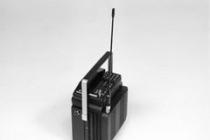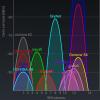Specifications
- Android 5.1.1
- 5.5-inch screen, 1080x1920 pixels (401 ppi), SuperAMOLED, Corning Gorilla Glass 4, with 2.5D effect
- 3 GB random access memory, 16 GB built-in (10.7 GB available to the user), microSD memory cards up to 128 GB
- 8-core Exynos 7580 processor, frequency up to 1.6 GHz, graphics coprocessor Mali T720
- Li-Pol battery, 3300 mAh, fast charging in 110 minutes up to 100 percent, video playback - up to 15 hours, in 3G or LTE - up to 14 hours, talk time - up to 17 hours
- Front camera 5 megapixels (f / 1.9), main camera 13 megapixels (f / 1.9)
- NFC (for models with LTE support)
- FM radio
- Fingerprint sensor
- Two nanoSIM cards, instead of one SIM card you can install a memory card
- USB 2.0, BT 4.1, ANT +, 802.11 a / b / g / n 2.4 + 5.0 GHz, HT40
- Body colors: gold / black / white
- Sensors - Accelerometer, Geomagnetic Sensor, Hall Sensor, Proximity Sensor, Light Sensor
- The SAR value for Europe is 0.414 W / kg (head), 0.547 W / kg (body)
- Dimensions - 151.5 x 74.1 x 7.3 mm, weight - 172 grams
Contents of delivery
- Telephone
- Charger
- A clip for removing the SIM card tray
- Wired stereo headset
- Instructions
Positioning
About what the A-series is in 2016, a lot and in detail is said in the review of the A3 and A5, junior models in relation to the A7. I am not interested in repeating myself, so those who wish can read that text in order to understand what place this line occupies within the Samsung lineup.
Within the A-series line, the A7 model is the flagship, since it is not worth taking into account the A9 / A9 Pro, these devices will not appear in Europe, and, therefore, in Russia, with a high probability, this is a niche offer for the Asian markets. The conventional flagship has no technical differences from the same A5, the only difference is in the diagonal of the screen, as well as in a larger amount of RAM. But the majority of consumers will look at the screen and assess how much such a model is needed, and not a device with a diagonal of 5.2 inches. It seems that the difference of 0.3 inches is minimal, in practice the difference is striking, in the A7 the screen is as comfortable as possible due to its size. But there is a disadvantage that the size of the device will not suit everyone. The operating time differs for the better, since there is a battery with a larger capacity. But otherwise it is still the same A5 in a different size.
Unfortunately, there is practically no Note 4 left on the market, this model is gone, and it can only be found in individual chains or from gray sellers. Prices fluctuate in the range of 35-40 thousand rubles, which makes it obviously more expensive, so it cannot be an alternative to the A7 2016. On the market, in the segment of phablets, you can consider a huge number of different models, it is worth looking at the 5.5-inch diagonal. We will compare this device with some of them in conclusions. This model is worth paying attention to everyone who is looking for a good phablet with high-quality materials, design familiar from the flagships and an acceptable cost, which is lower than that of the flagships.
Design, dimensions, controls
The entire A-series is built from the same materials, the models look the same, even the color schemes are repeated. The only difference is in their sizes, which follow from the diagonal of the screen, while the thickness of the cases is the same for all.
The design of the line is directly borrowed from the flagship of the company - Galaxy S6. A metal case in which glass covers not only the screen, but also the back panel. The glass has a slight curvature, this is the trendy 2.5D in the last year, the glass itself is Corning Gorilla Glass 4.
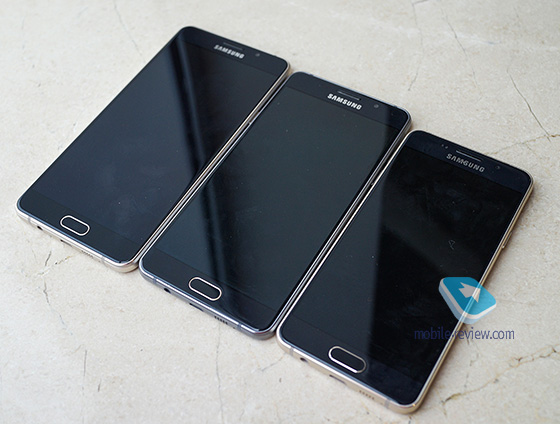
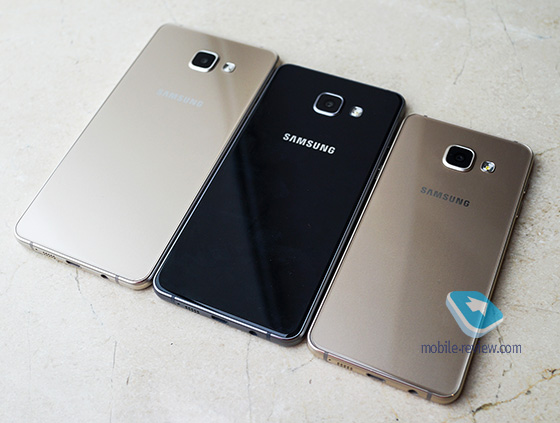
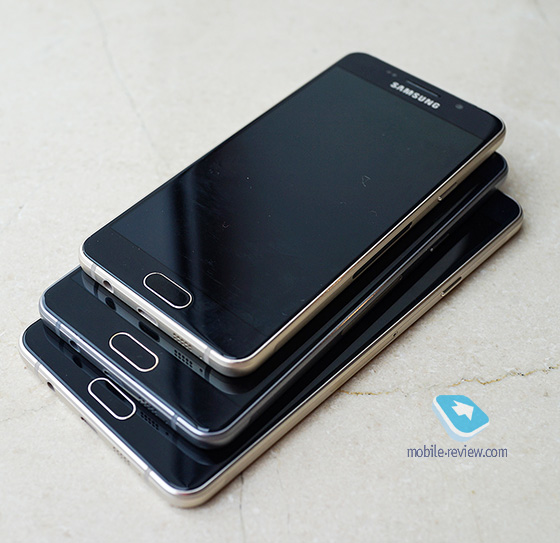
Considering that the device is aimed at the widest possible audience, it comes out in three colors at once - gold, black, white.
Each color has a metallic sheen, plays well in the sun. There are handprints on the rear panel, they are clearly visible indoors, those who are sick of it will be unhappy with the phone. Small bevels of the panels are pleasant in the hands, but they do not create a sliding effect on a table or an inclined surface, the device lies well.
The phone measures 151.5 x 74.1 x 7.3 mm and weighs 172 grams. For its class, the device is compact and confidently fits in the hand, although it may seem too big for women.
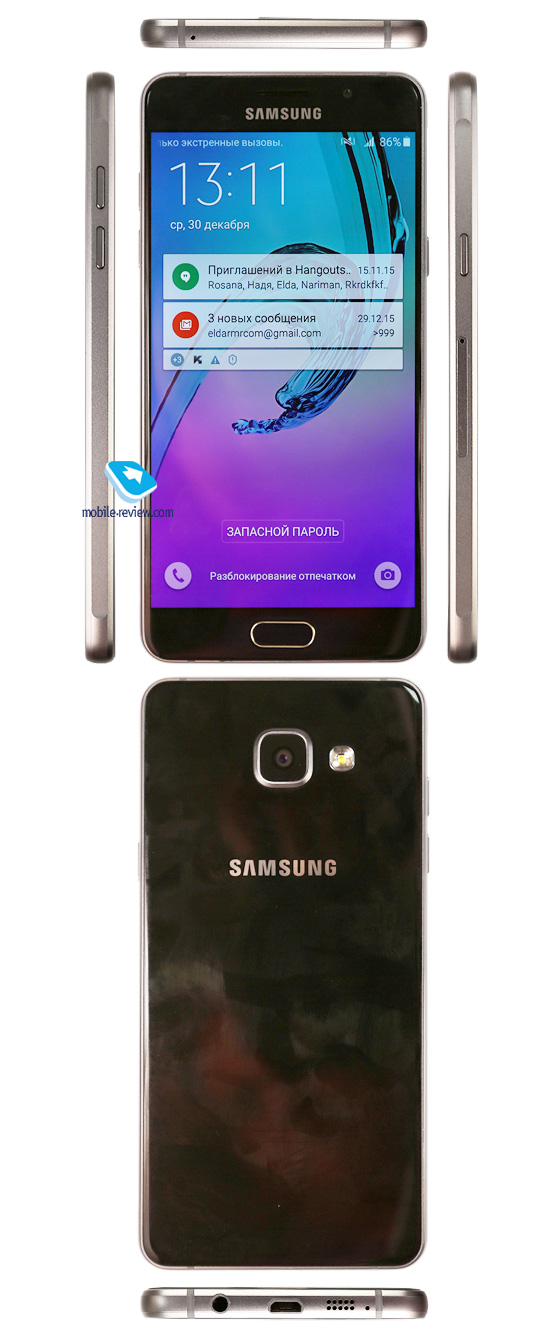
At the top and bottom ends there is a microphone, there is a noise cancellation system that works well in noisy conditions.
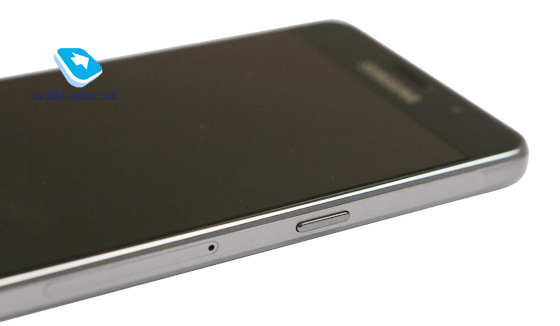
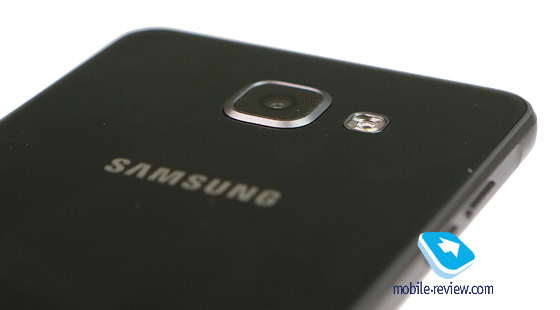
Two separate volume keys are on the left side, the on / off button is on the right. There is also a slot for two SIM-cards (nano), instead of one of them you can install a memory card.
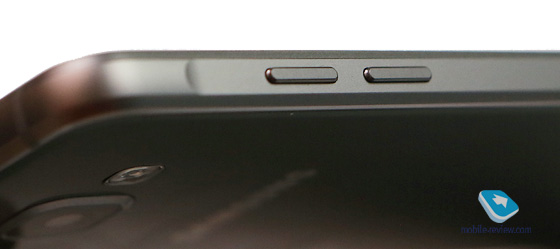
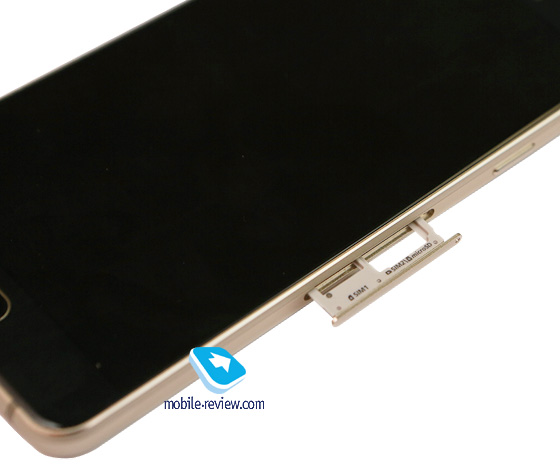

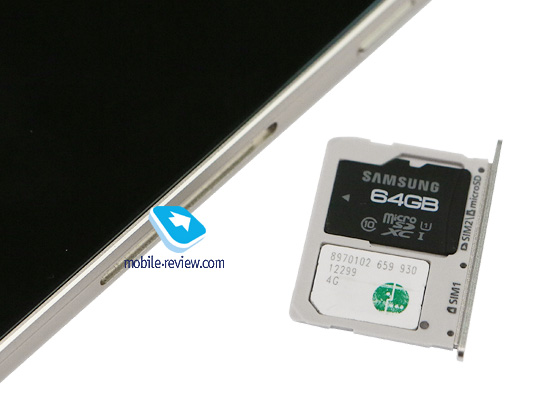
On the rear panel you can see a 13-megapixel camera, it protrudes above the body, which does not interfere with your life. Nearby is a LED flash. At the bottom there is a 3.5 mm headphone jack and a speaker hole.

You will see the proximity and light sensor above the screen, but below it there is a physical key, on the sides there are two touchscreens. They have blue backlighting. A fingerprint sensor is inscribed in the central key, it reacts to touch and works perfectly, although it does not recognize wet hands, as, incidentally, with other companies.

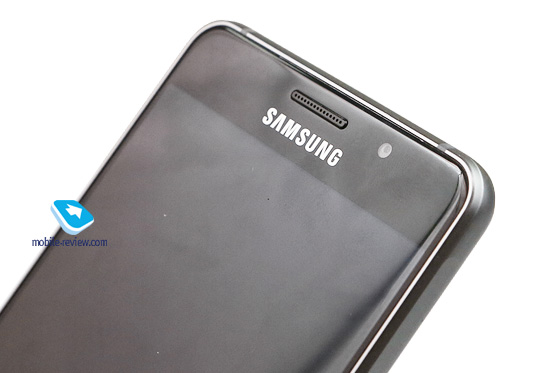
Another point is the absence of an LED indicator of events, it is simply not there. It's a trifle, but I would like to see such a sensor, it can come in handy in different situations.
Display
The technical characteristics of the screen are as follows: 5.2 inches, 1080x1920 pixels (424 ppi), SuperAMOLED, Corning Gorilla Glass 4, with 2.5D effect. Let me remind you that 2015 became interesting from the point of view of the fact that literally all notable players began to install AMOLED matrices in their flagships, since Samsung began selling them on the side. But lagging behind their own Samsung screens was for several generations, although this did not stop the manufacturers, they saw in this more advantages than disadvantages.
In A7 2016, it is almost impossible to find fault with the screen, it is of very high quality and in all scenarios of use shows Good work, whether it's reading texts or working in the bright sun. Traditionally, you can set different color display options in the settings (Adaptive screen, AMOLED movie, AMOLED photo, main). Those who prefer muted, natural colors can get them, and those who want a brighter picture can choose one too. This is a matter of your choice, not a manufacturer's constraints.


Automatic brightness control works correctly, I use it all the time and have no problems. Of the advantages of using it, I note that on the street in this mode the screen becomes readable, in manual mode the backlight brightness is limited to lower values.
It is possible to reproach, and then only theoretically, the screen resolution, FullHD is not so much, especially since in the flagship it is QHD-resolution. On the other hand, you simply will not notice this difference, no dots on the screen are visible, even if you bring it close to your eyes. Some people claim that they see something, but this is akin to being convinced of it, rather than objective reality. Another horror story that people love to scare people is that AMOLED screens burn out. Considering how I use phones, and the fact that they work 3-4 hours during the day with the screen on, or even more, this should have happened to me a couple of years ago on older and more primitive screens. But it didn’t happen. And in services, we have encountered such a problem in isolated cases. Although in demos that run 24 hours a day, seven days a week, this occurs after a couple of weeks of work.
Whatever one may say, but the screen in this device is one of the best on the market, which is worth a lot, since you will have to work with it for a long time.
Battery
The operating time of the phone is critical for me, I think the same can be said about any person. Working time is the parameter that is important for each of us. This phone has a battery capacity of 3300 mAh (Li-Pol), which does not look anything special against the background of Chinese devices, they already have 4000, 5000 and even 6000 mAh batteries. But how the Chinese differ from the A-brands, and in this case the A7, is that large capacity batteries, they compensate for the shortcomings of chipsets, the fact that they assemble their devices from publicly available cubes and do not work with them to optimize power consumption.
During the test, we always look at how long the video device can spin (AVI, FullHD, MX Player, maximum brightness). And then the moment of truth comes, most of the Chinese break down on this test, they show the result in 5-7 hours with a battery of about 3000 mAh. The same A7 2016 works until 15:00.
It is clear that in real life the scenarios for using the phone are very different, we use the Internet, social media and other possibilities. My experience with the A7 is that it provides two to three days of work, depending on the workload you have. For example, for those who use calls and SMS, do not surf the Internet for a long time, it will be about 3.5 days of work with only an hour of calls and up to two hours of screen work! As for me, this is a very, very good result. For more active people, there will be about two days of phone operation, 3 hours of the screen on and up to an hour of talks. The audience that buys such solutions will be very happy with how long the phone lasts. Compared to the A5, the phone gives about 15-20 percent longer battery life, which is something we can only rejoice at.
![]()




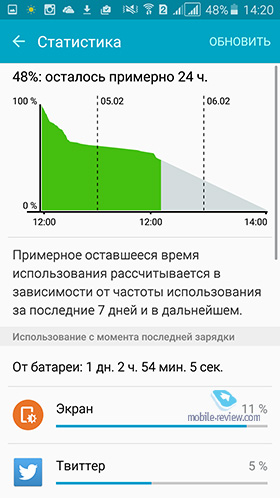
Traditionally, there is fast charging, which allows you to charge the battery up to one hundred percent in 110 minutes. In half an hour, you can get a little over half the charge, which is nice.
There is also a power saving mode, when the backlight of the screen, the frequency of the processor are limited, in this mode many will not experience problems with the operation of the device, but the operating time will increase by at least 20 percent. In the maximum power saving mode, everything turns gray on the screen, and the device can provide hours of operation even with a small charge.
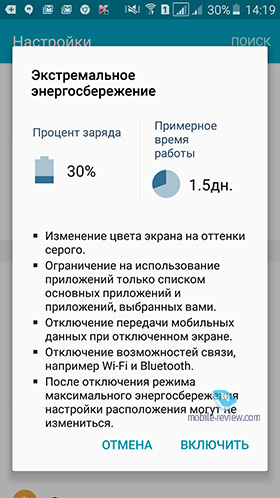
I am glad that technologies that were reserved only for flagships have moved into the middle lineup and made this model remarkable. Opening hours in different modes- this is her strong point.
Memory, RAM, performance
The transition to the Exynos 7580 gave the company the opportunity to dramatically increase the performance of the A7 in 2016, that is, the model became interesting from this point of view. It makes no sense to compare it with its predecessor, I'm rather talking about the fact that, against the background of other devices in this price niche, the 2016 A7 began to show results close to the maximum. And that's not bad. I was surprised that despite the 28 nm process, the processor's gluttony is low. It almost does not get warm under load, this is noticeable only when transferring data via LTE, there is a heating of the area near the camera.
In synthetic tests, this processor performed well.

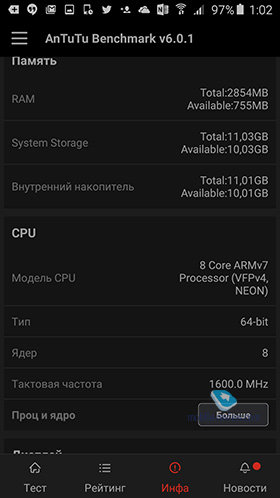
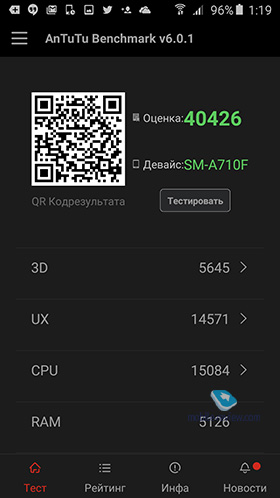

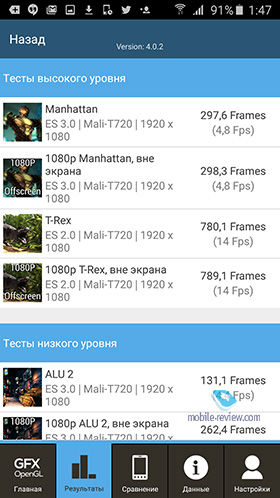
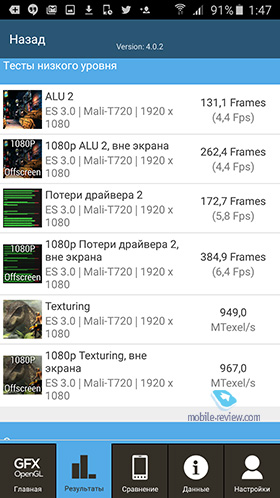

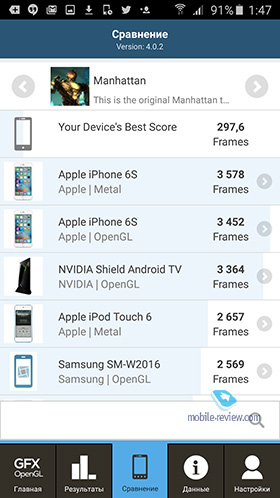
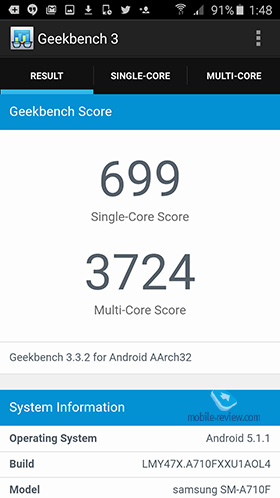
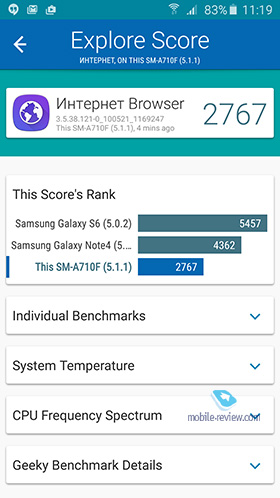
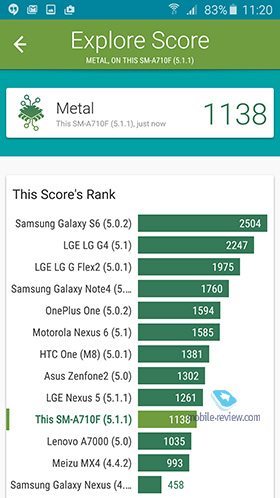
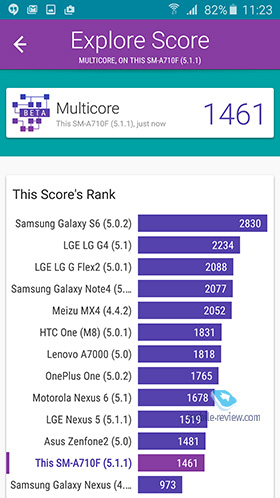
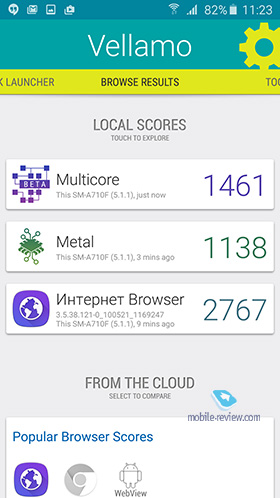
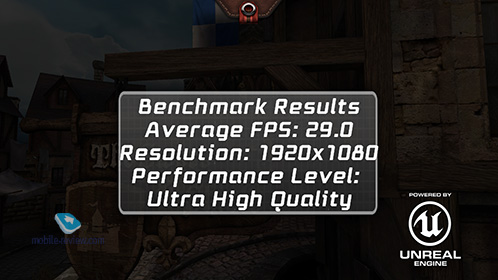
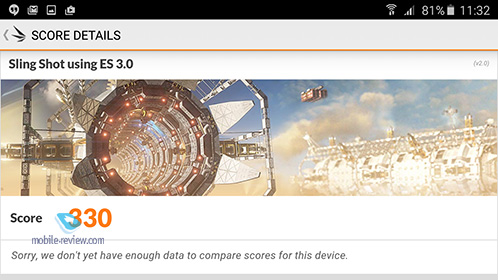
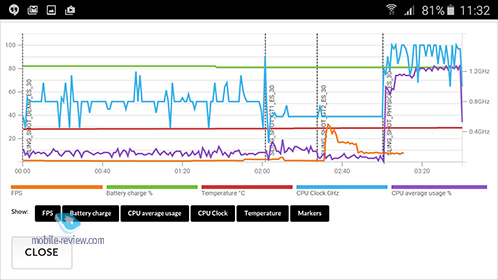
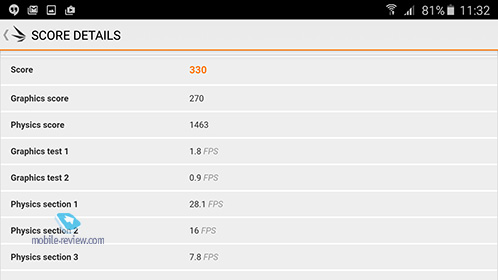
The built-in memory in the device is 16 GB (10.7 GB is available to the user), but there is also support for memory cards, which no flagship from Samsung can boast of. It is this moment that surprises me, since it is a competitive advantage that was voluntarily abandoned. However, in the A7, this is all right, so you can install a memory card up to 128 GB and not know any problems.
RAM is 3 GB, it is enough for all tasks. Once again I want to emphasize that from the point of view of the chipset, the solution turned out to be balanced, powerful processor with good performance, while it does not work like a stove and does not gobble up the battery.
Communication capabilities
Everything is pretty typical, USB version 2, there is NFC support, Ant +, 802.11 a / b / g / n 2.4 + 5.0 GHz, HT40, BT 4.1, built-in LTE modem supports LTE Advanced Cat.6.
Camera
The front camera does not have autofocus, but has a resolution of 5 megapixels, which is not bad, it is light-sensitive (f / 1.9).
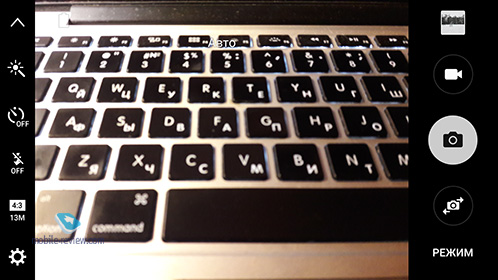
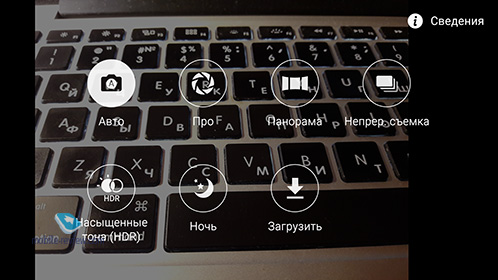
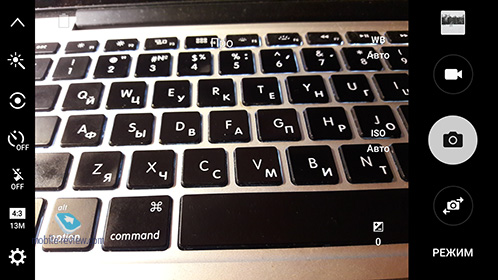
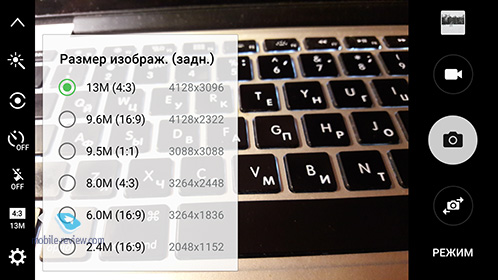
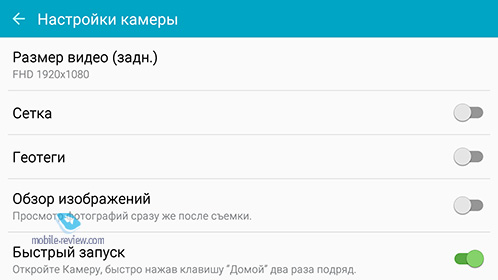
The main camera is 13-megapixel, it is similar in characteristics to the cameras that were in the flagships of last year, it produces good picture quality, as you can see for yourself. The main improvement over the previous season is that the shots are pretty good in the dark. A number of modes that are on flagships are missing, there is no HDR mode for full resolution (only for 8 megapixels). But in general, the camera has grown a lot compared to the previous generation and will satisfy even the most discerning user.




















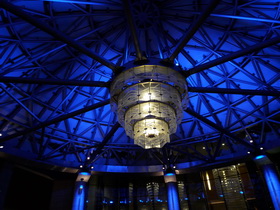









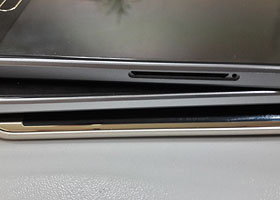

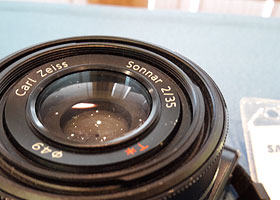


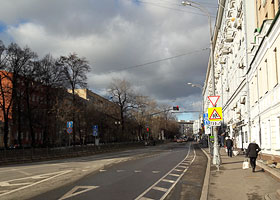
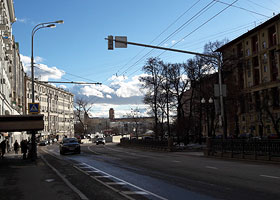
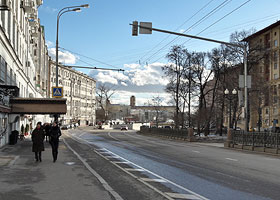





![]()
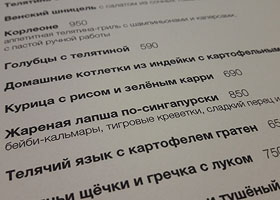



Software
The model went on sale on Android 5.1.1, but at the end of spring it will receive an update to Android 6. Inside we see a light version of TouchWiz, the same was on the Samsung S6, most of the menus and settings are the same. You can watch a detailed video that describes all the nuances of this shell.
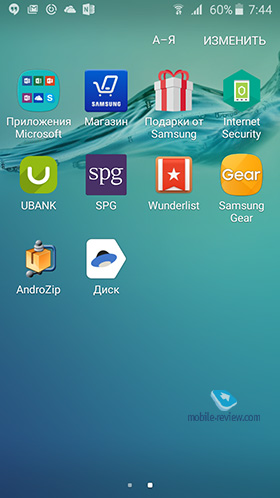
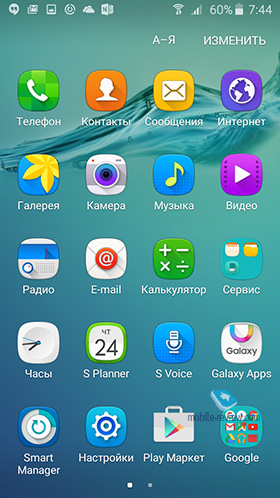
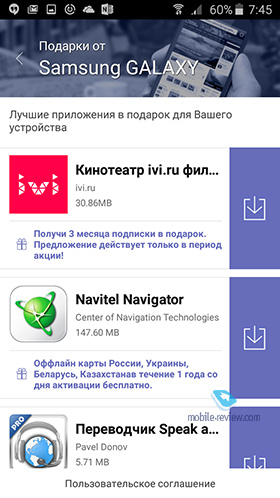


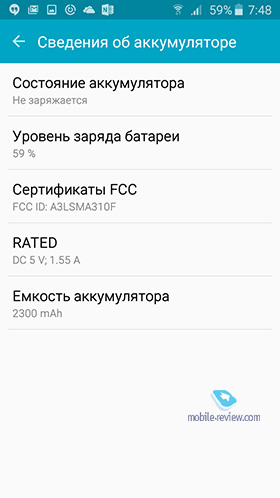
![]()
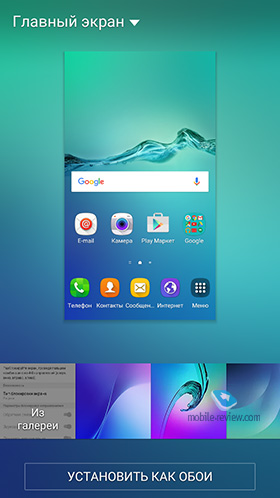
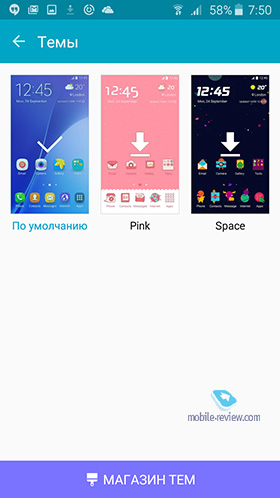
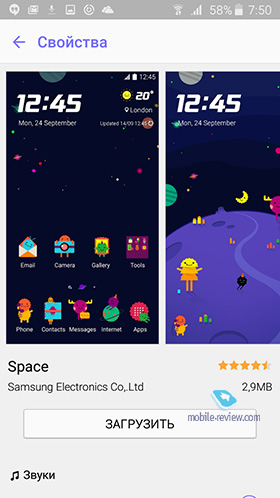

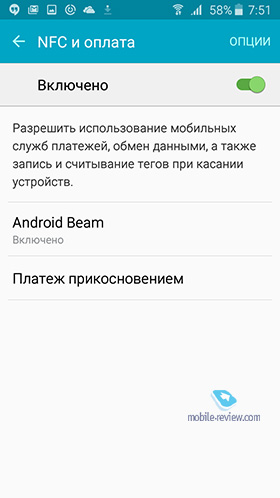
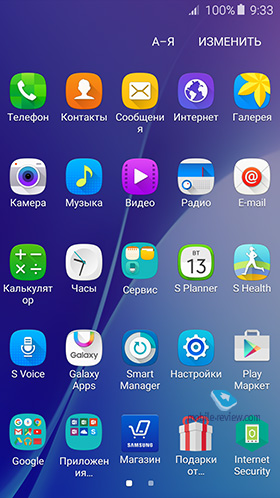



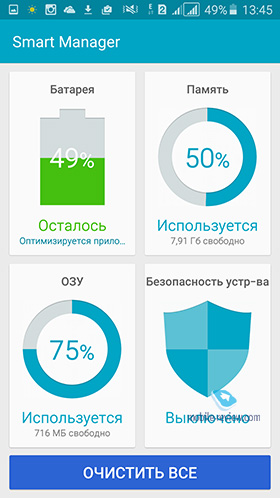
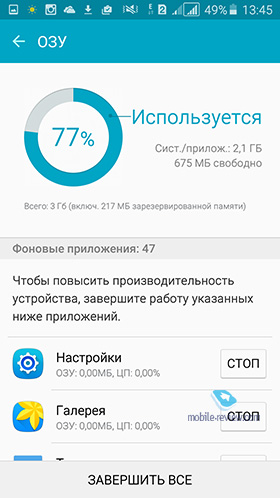
Unlike the top models, there is a built-in FM radio here, which looks like a nice bonus.
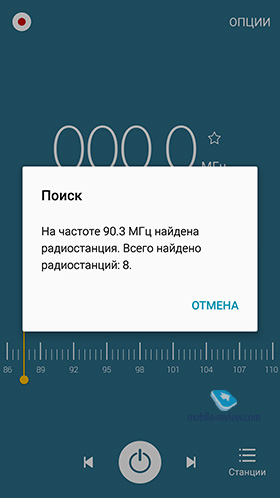
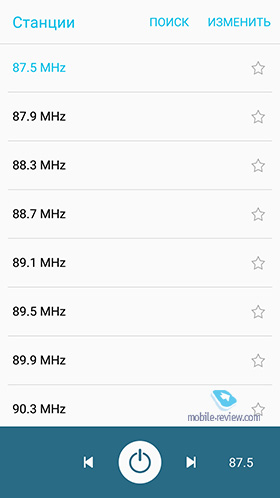
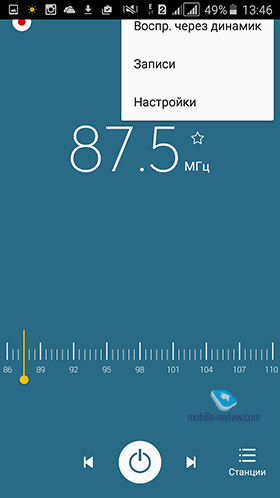

This unit can be loaded from Samsung App Store apps like S Health, child mode and others, even if they are not preinstalled.
When using KNOX, you can install any program in duplicate, for example, install two WhatsApp messengers on one device and use them for each SIM card (two numbers, two messengers). You can even correspond with yourself. Exactly the same trick can be done with any software, no phone allows you to simultaneously work with two messengers on one device with different numbers, this is a unique feature from Samsung.
In the past few years, following the release of flagships, it has become popular among manufacturers to present their smaller versions, as well as simply copy the design for cheaper models. But as practice has shown, it is difficult to do with one design, buyers still pay attention to the characteristics. Perhaps it was this discovery that pushed Samsung to create the “A-Series,” a line of smartphones that not only resemble flagship models, but also have a comparable set of capabilities. This year the composition of the "A-series" has not changed, it is still three smartphones with the names A3, A5 and A7, but their design and characteristics have noticeably updated compared to last year's versions. Not so long ago, we tested the Galaxy A5 (2016), and today we will look at the older model of the series - Galaxy A7 (2016).
Design, materials and build quality
Externally, the Galaxy A7 (2016) can be distinguished from only due to its larger dimensions, and both of them borrow the design from the flagship. Samsung used the same materials and body construction to create new smartphones. 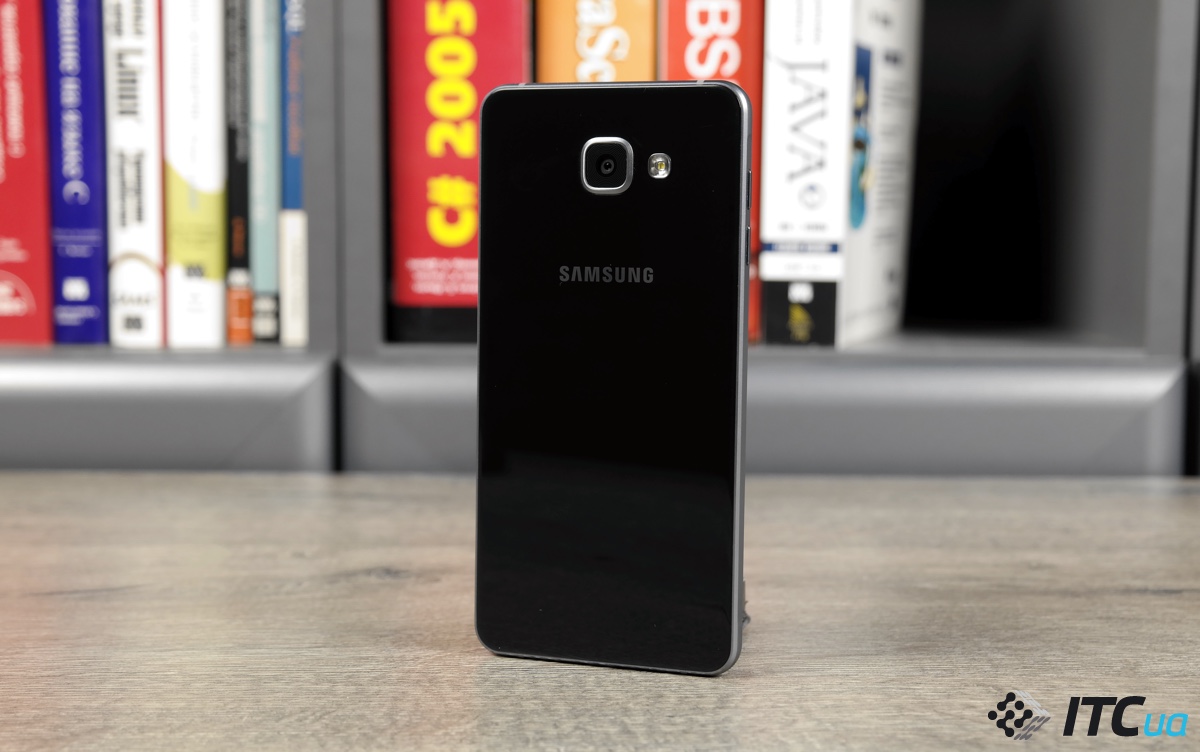 The front and back sides of the Galaxy A7 (2016) are covered with a protective Corning Gorilla Glass 4, which is slightly rounded at the edges (2.5D), and the edges of the case are made of aluminum.
The front and back sides of the Galaxy A7 (2016) are covered with a protective Corning Gorilla Glass 4, which is slightly rounded at the edges (2.5D), and the edges of the case are made of aluminum. 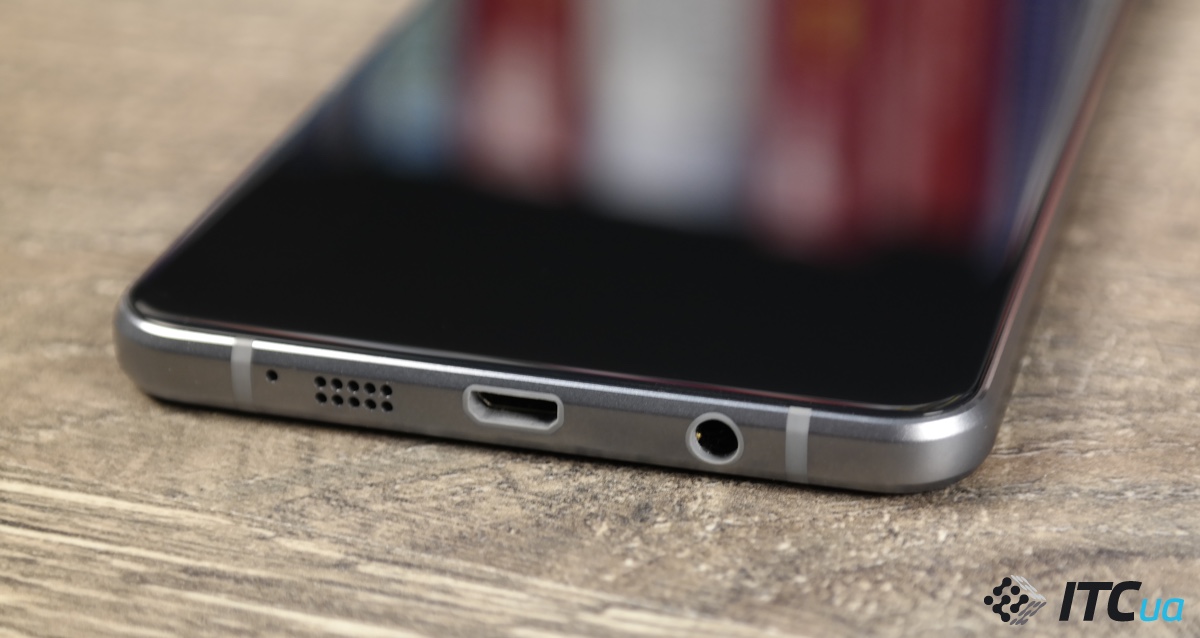 Thus, the Galaxy A7 (2016) not only looks good, but also feels like the Galaxy S6 in the hands.
Thus, the Galaxy A7 (2016) not only looks good, but also feels like the Galaxy S6 in the hands. 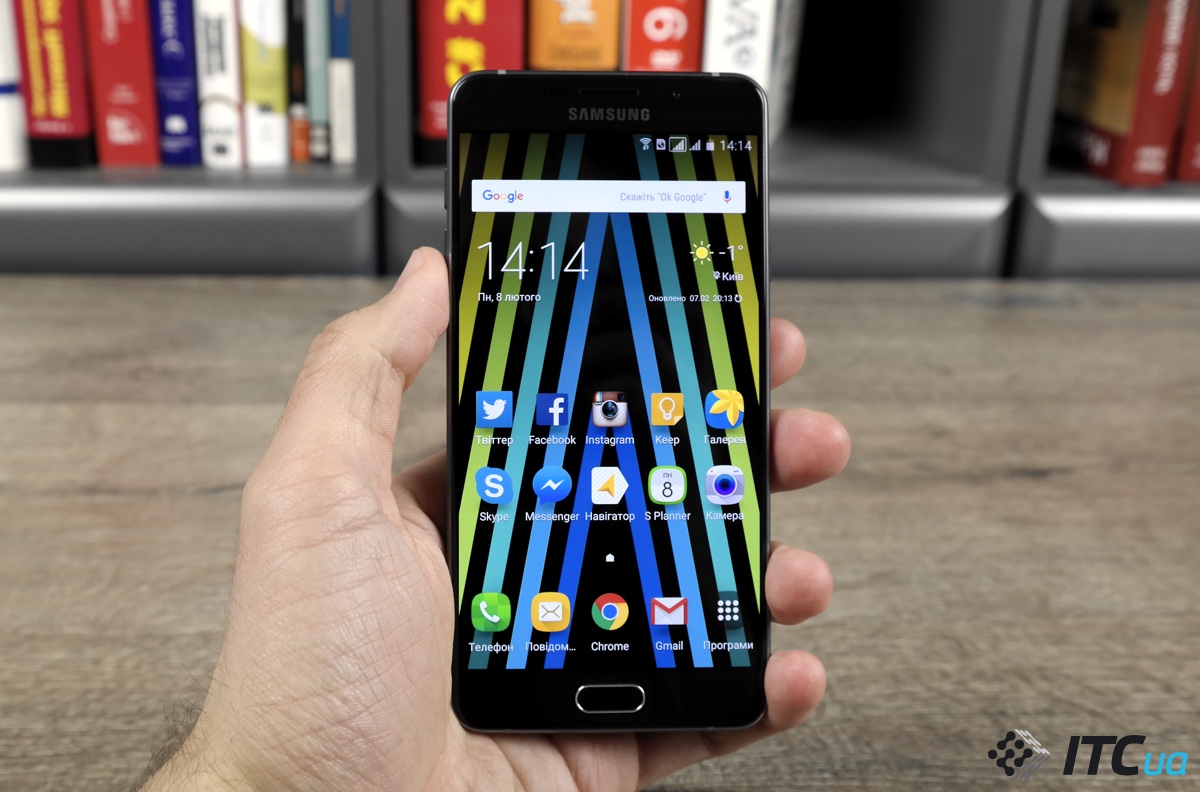 The case of Galaxy A7 (2016) is one-piece, the protective glass of the front and rear parts is tightly fitted to the metal frame. All this together with a weight of 172 grams creates the feeling of a sturdy smartphone.
The case of Galaxy A7 (2016) is one-piece, the protective glass of the front and rear parts is tightly fitted to the metal frame. All this together with a weight of 172 grams creates the feeling of a sturdy smartphone.
Sidewalls Galaxy cases The A7 (2016) have a rough finish, and that's exactly what saves you from the slippery back of your smartphone. This is due to the smooth glass with a good oleophobic coating, which, although it allows you to erase fingerprints without any problems, still strives to slip out of your hands. 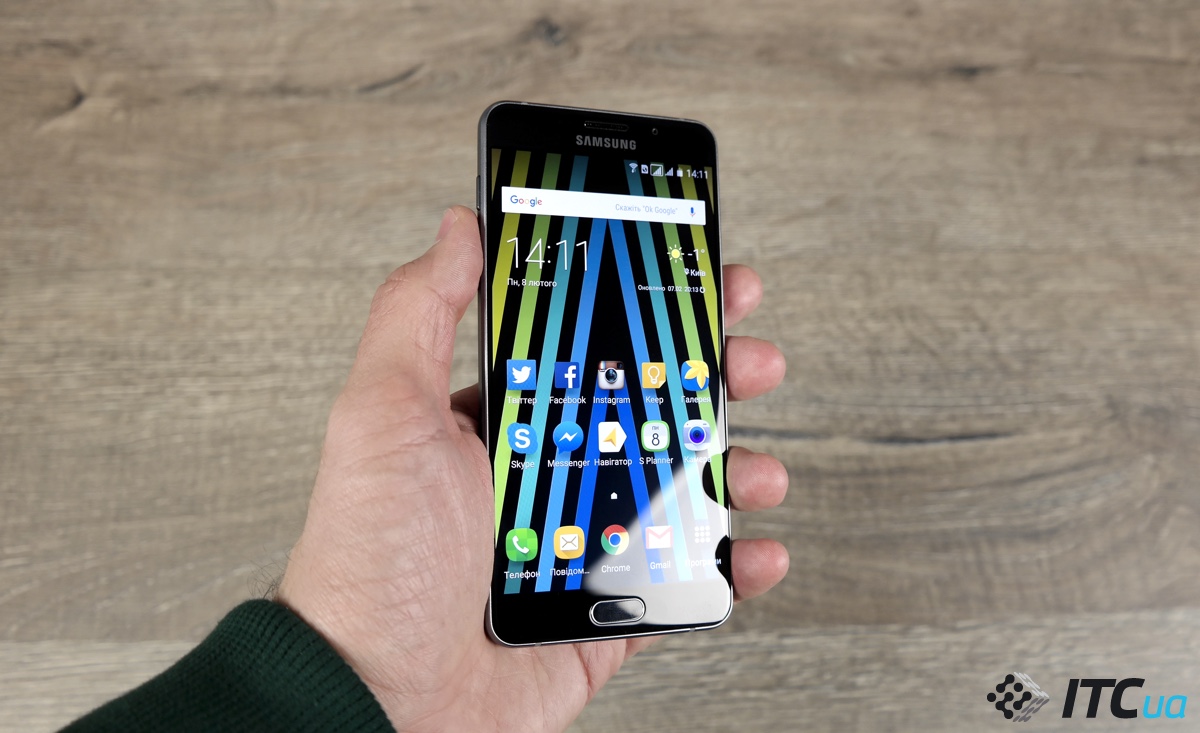 The layout of the keys and connectors on the Galaxy A7 (2016) is basically the same as on latest smartphones Samsung. The volume keys are on the left side, the power button and the nano SIM (or microSD) slot are on the right. Above is the noise canceling microphone hole, and below: 3.5mm headphone jack, microUSB port, and speaker grill.
The layout of the keys and connectors on the Galaxy A7 (2016) is basically the same as on latest smartphones Samsung. The volume keys are on the left side, the power button and the nano SIM (or microSD) slot are on the right. Above is the noise canceling microphone hole, and below: 3.5mm headphone jack, microUSB port, and speaker grill.
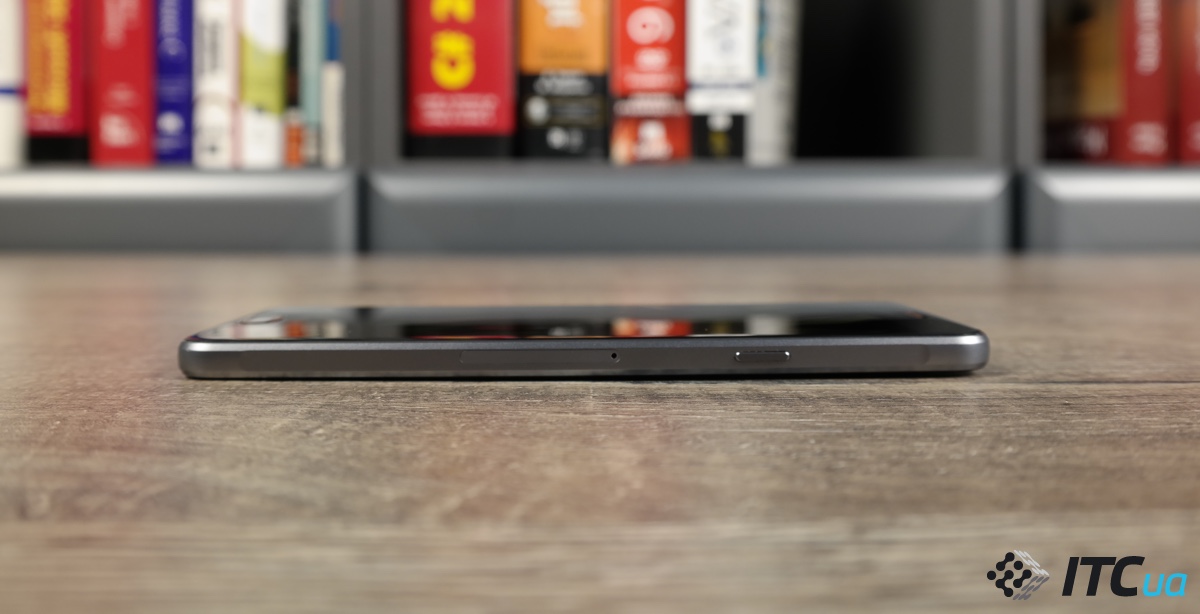
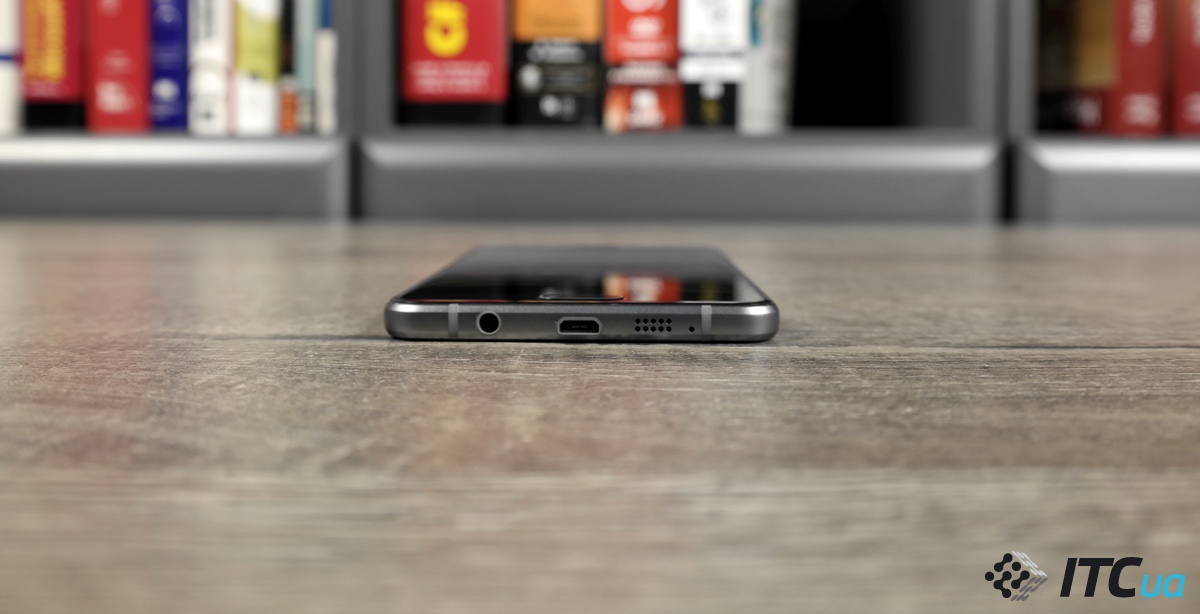
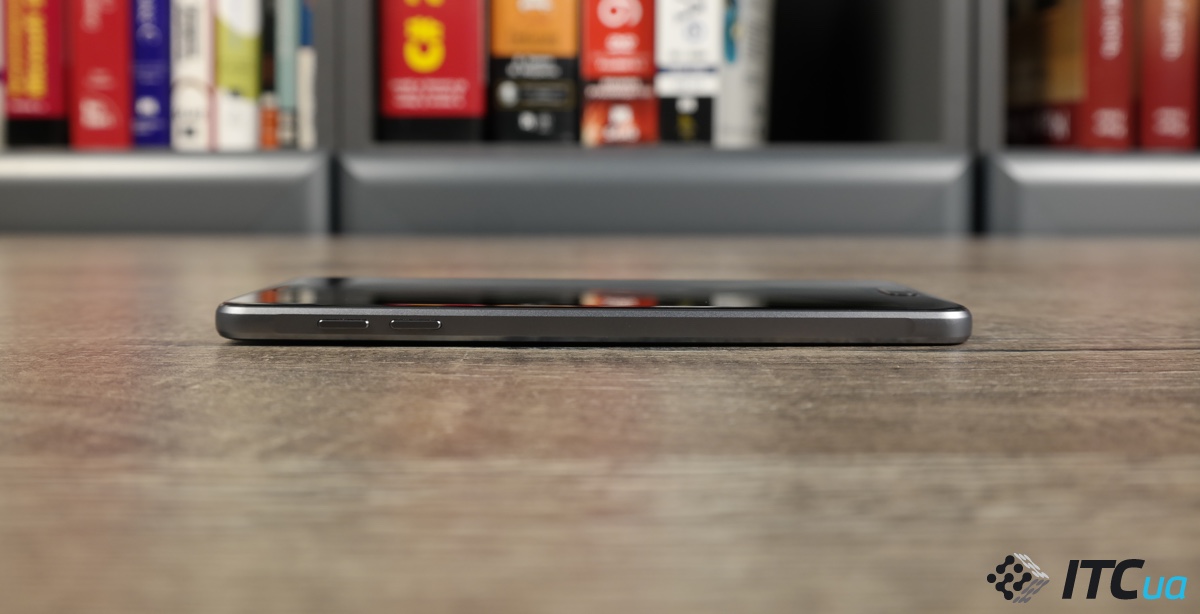

Under the display you can find touch-sensitive control keys, as well as a mechanical button in which a fingerprint scanner is inscribed. 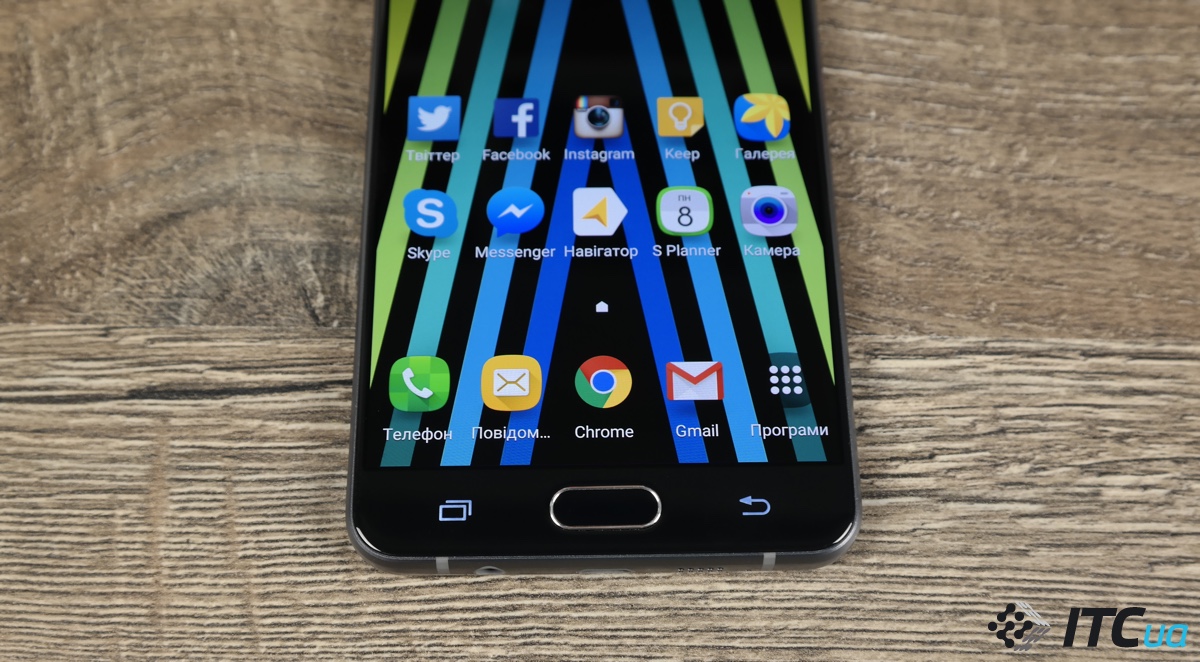
The proven layout of the control keys, however, did not prevent Samsung developers for some reason from turning off vibration when pressing the touch buttons. In this case, the vibration response does not work even when you touch the display. This cannot be called a big drawback, but for experienced Samsung smartphone users, this approach will definitely seem unusual.
Despite the 5.5-inch display, the Galaxy A7 (2016) doesn't look very large, aided by the thin bezels on the sides of the display. In general, the dimensions of the case are 151.5 x 74.1 x 7.3 mm.
Display
The Galaxy A7 (2016) uses a 5.5-inch Super AMOLED touchscreen display with a resolution of 1920 x 1080 pixels (403 ppi).

It has several display modes: "Responsive", "Photo", "Cinema" and "Basic". When each of them is activated, the screen changes the display of colors, they become the most saturated in the "Adaptive" mode, while in the rest they are closer to natural. We measured the display in the "Basic" mode, in which the minimum brightness is 2 cd / m2, and the maximum brightness is 398 cd / m2.

Calibration Galaxy screen A7 (2016) performed on good level, it provides almost 100% coverage of the sRGB color space, its color temperature is at 6500K, and the gamma at the reference value is 2.2, the color balance is even, the backlighting is uniform.
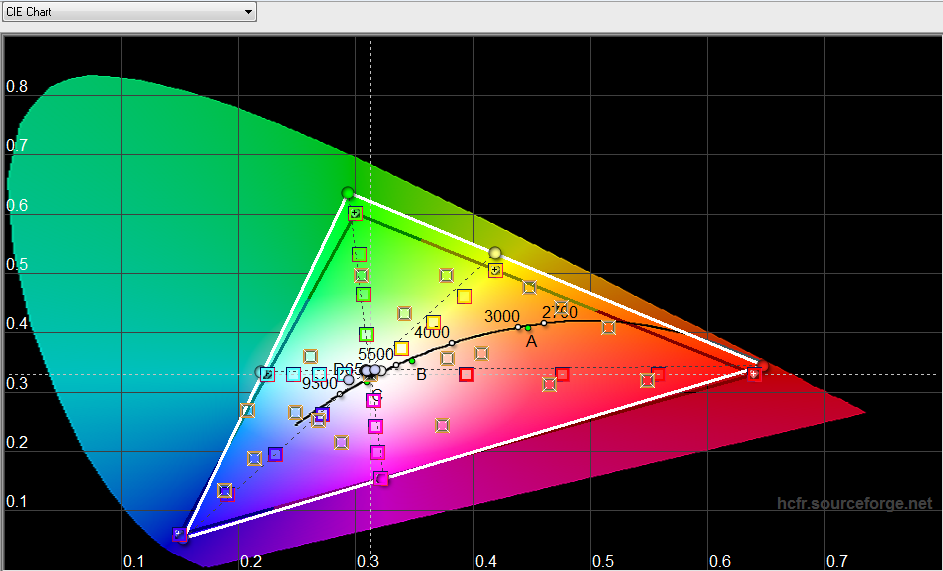
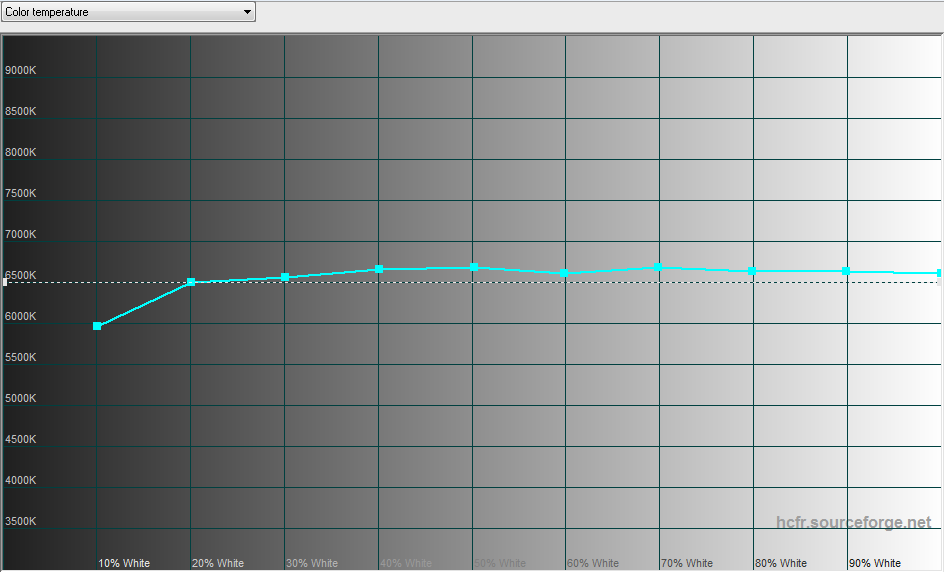

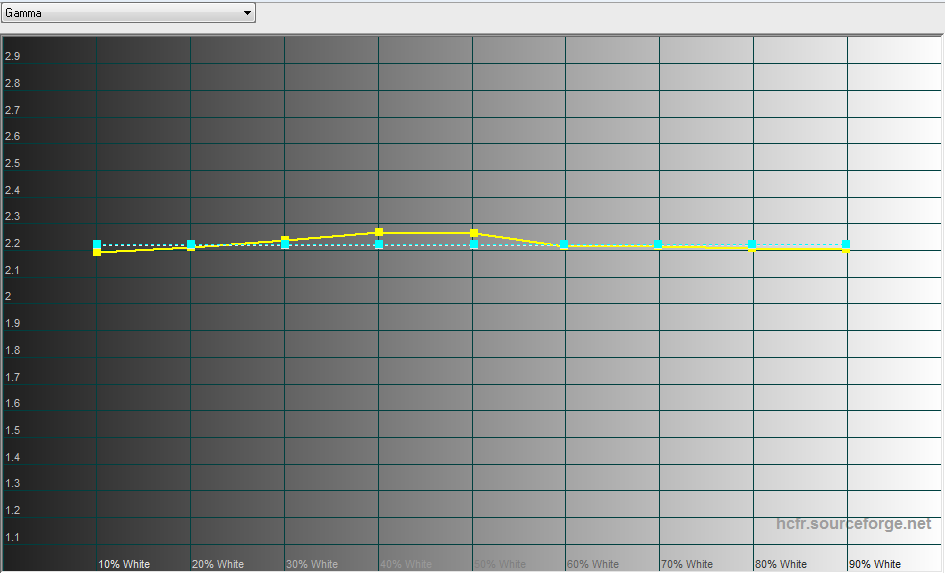
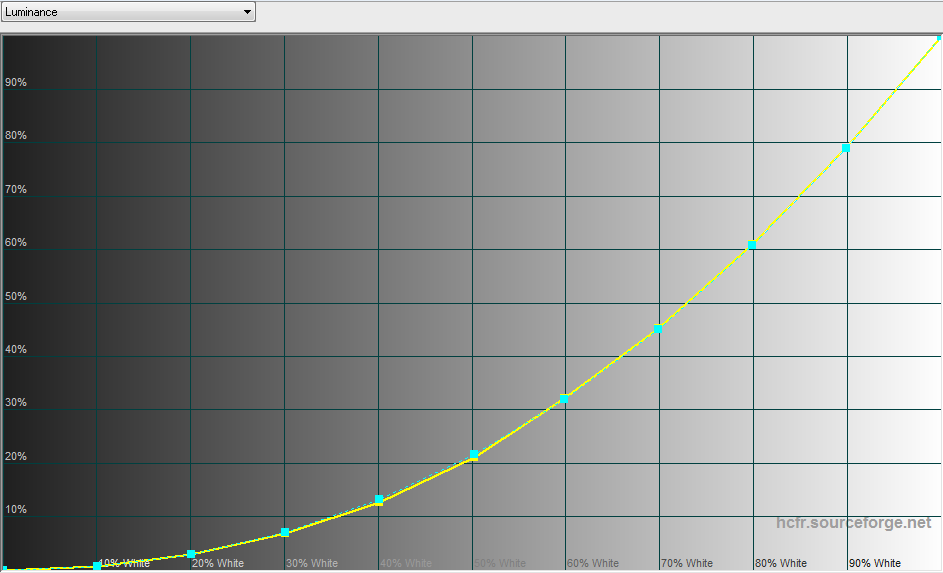
As a result, the Galaxy A7 (2016) display can be called a good solution, which is inferior to the matrices used in Samsung's flagship smartphones, except perhaps in resolution.
Platform and performance
Galaxy A7 (2016) is based on not the most famous Samsung processor... This is a 20nm 64-bit Exynos 7 Octa 7580 chip, built on the ARM big.LITTLE architecture with four efficient Cortex-A57 cores and four additional Cortex-A53 cores. His maximum frequency reaches 1.6 GHz. The Mali-T720 MP2 video chip is responsible for graphics processing.
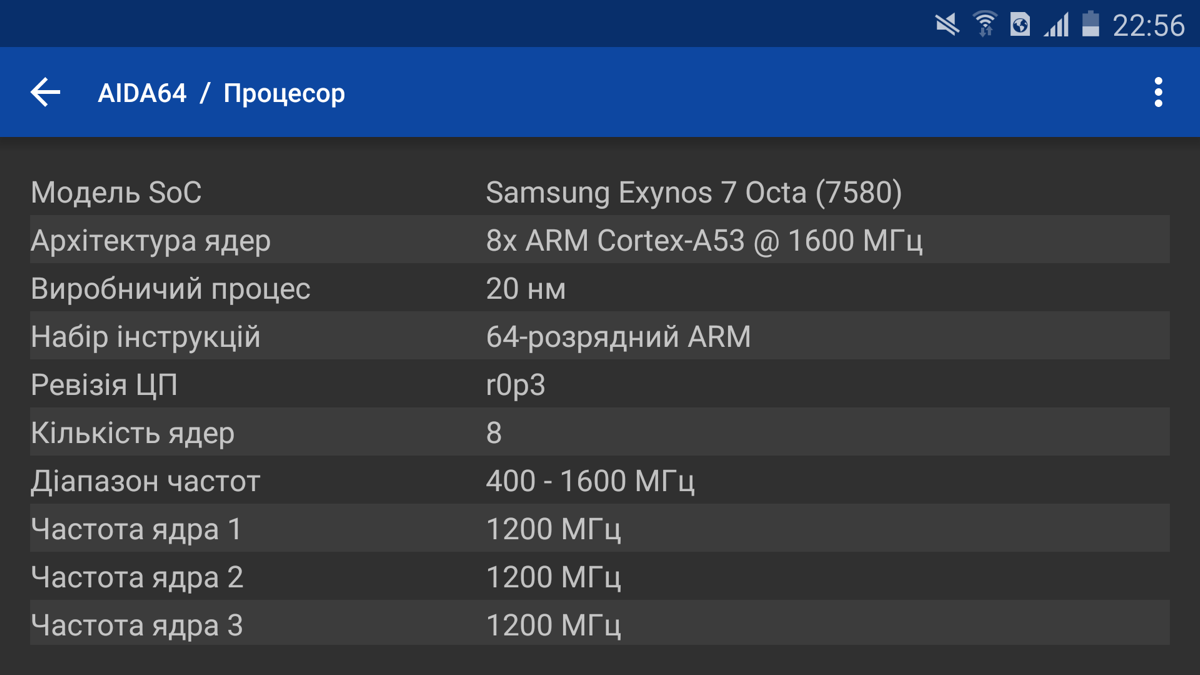
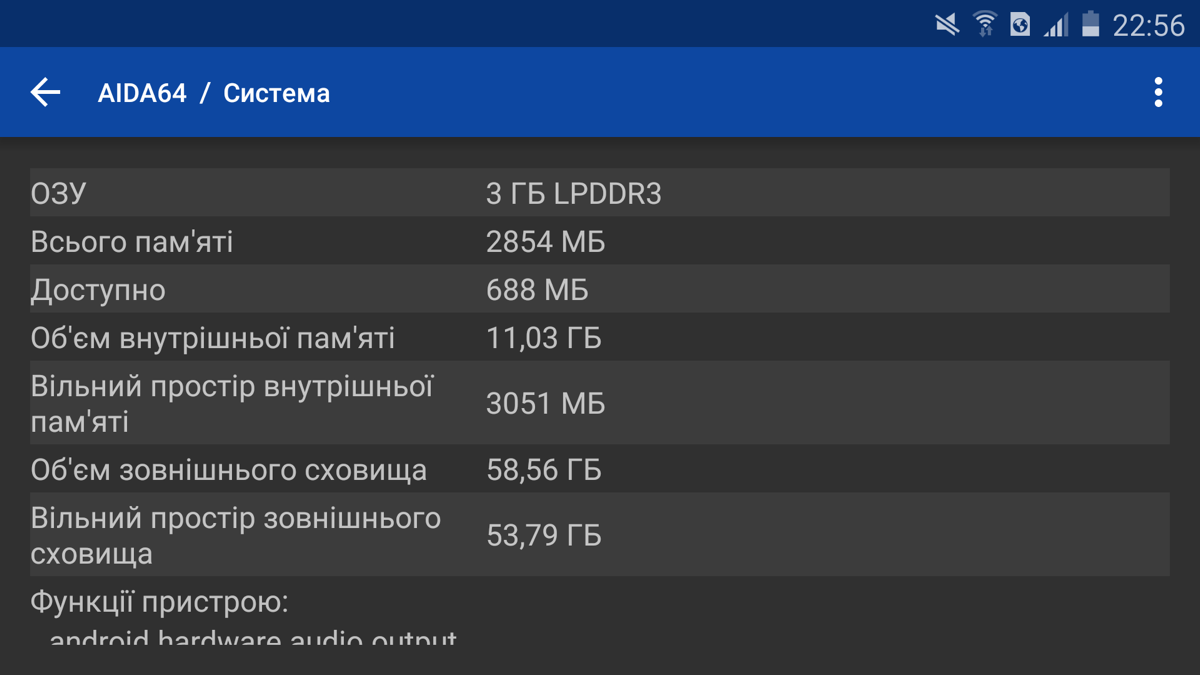
To date, the Exynos 7 Octa 7580 is a mid-range solution that provides a smartphone with better performance than the year before. flagship Galaxy S5. Moreover, the Galaxy A7 (2016) also has 3 GB of LPDDR3 RAM, an option that was available mainly in top models last year.
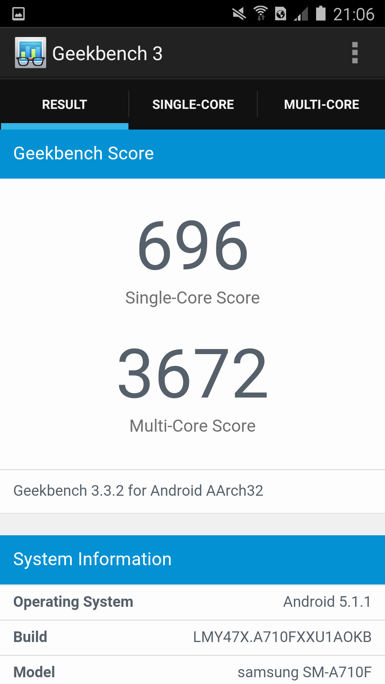
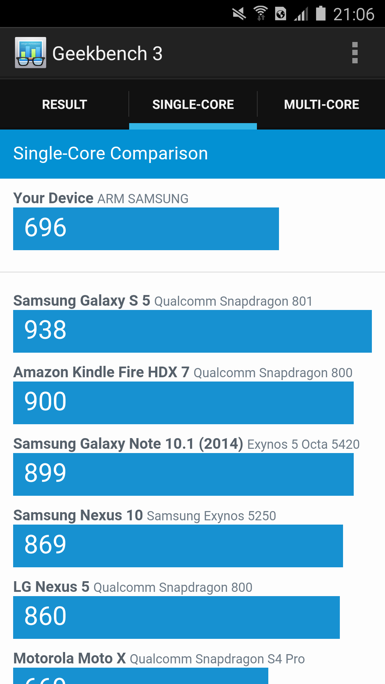
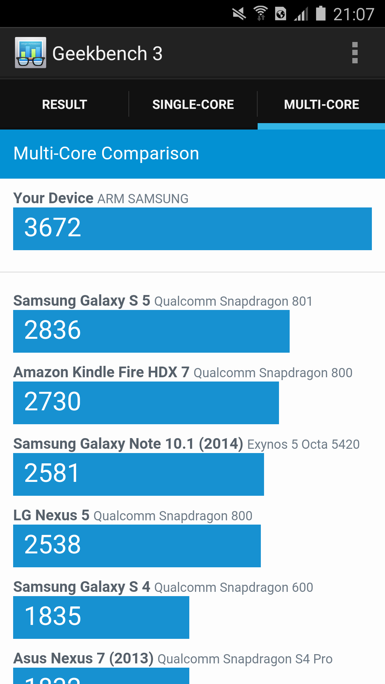
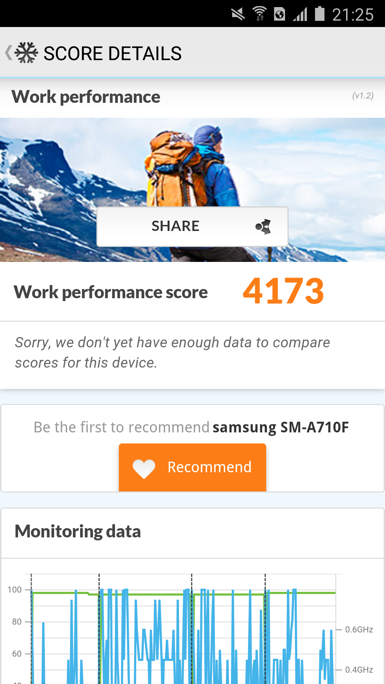
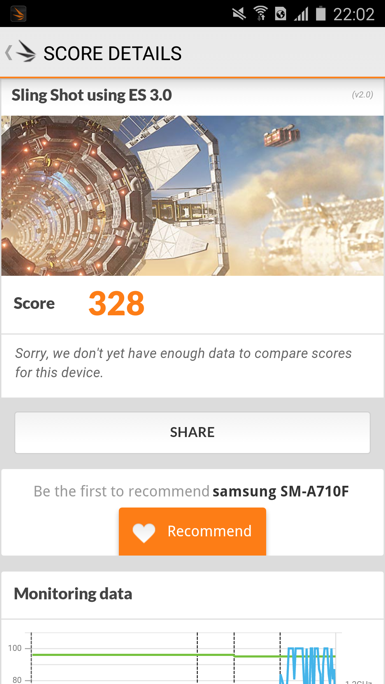
In general, the performance of the Galaxy A7 (2016) is sufficient for smooth interface operation, as well as for running modern games and applications.
The built-in memory is only 16 GB, but it can be expanded by microSD cards(up to 128 GB), although for this you have to sacrifice one nano SIM card slot, because they are combined. Thus, the user will have to choose: either use a smartphone with two SIM-cards, or expand the data storage at the expense of one of them.
Camera
The main camera in Galaxy A7 (2016) is 13-megapixel with f / 1.9 aperture and optical stabilization system. Despite the similar characteristics to the flagship models, Samsung has slightly curtailed the camera's capabilities at the expense of software. The camera in the Galaxy A7 (2016) shoots slower than the Galaxy S6, lacks Auto HDR, and is limited to HDR shooting at 8 megapixels. However, the pictures are still good, even in low light levels, although not as detailed as in Samsung's 16-megapixel cameras.
Photos in the studio:

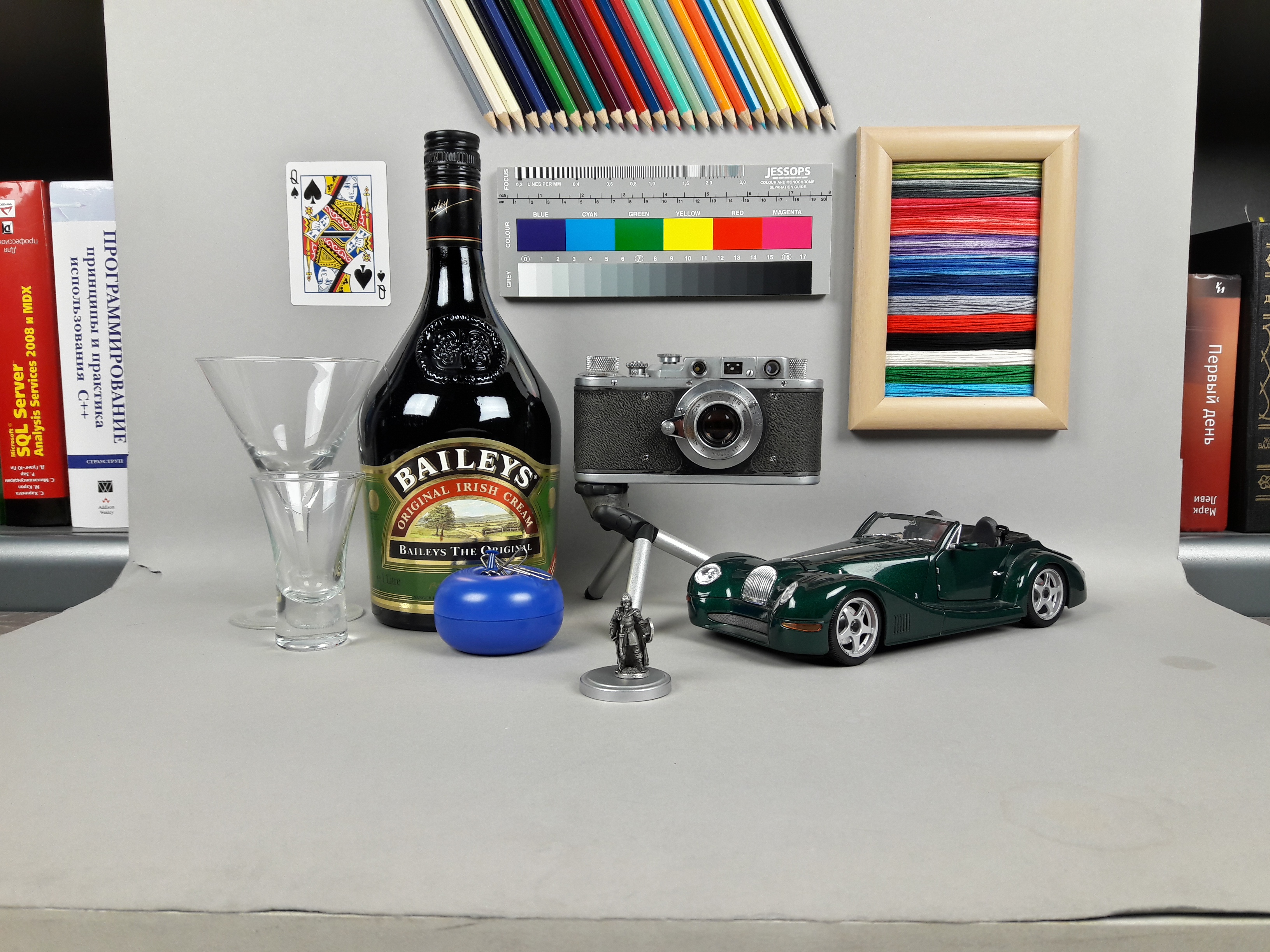

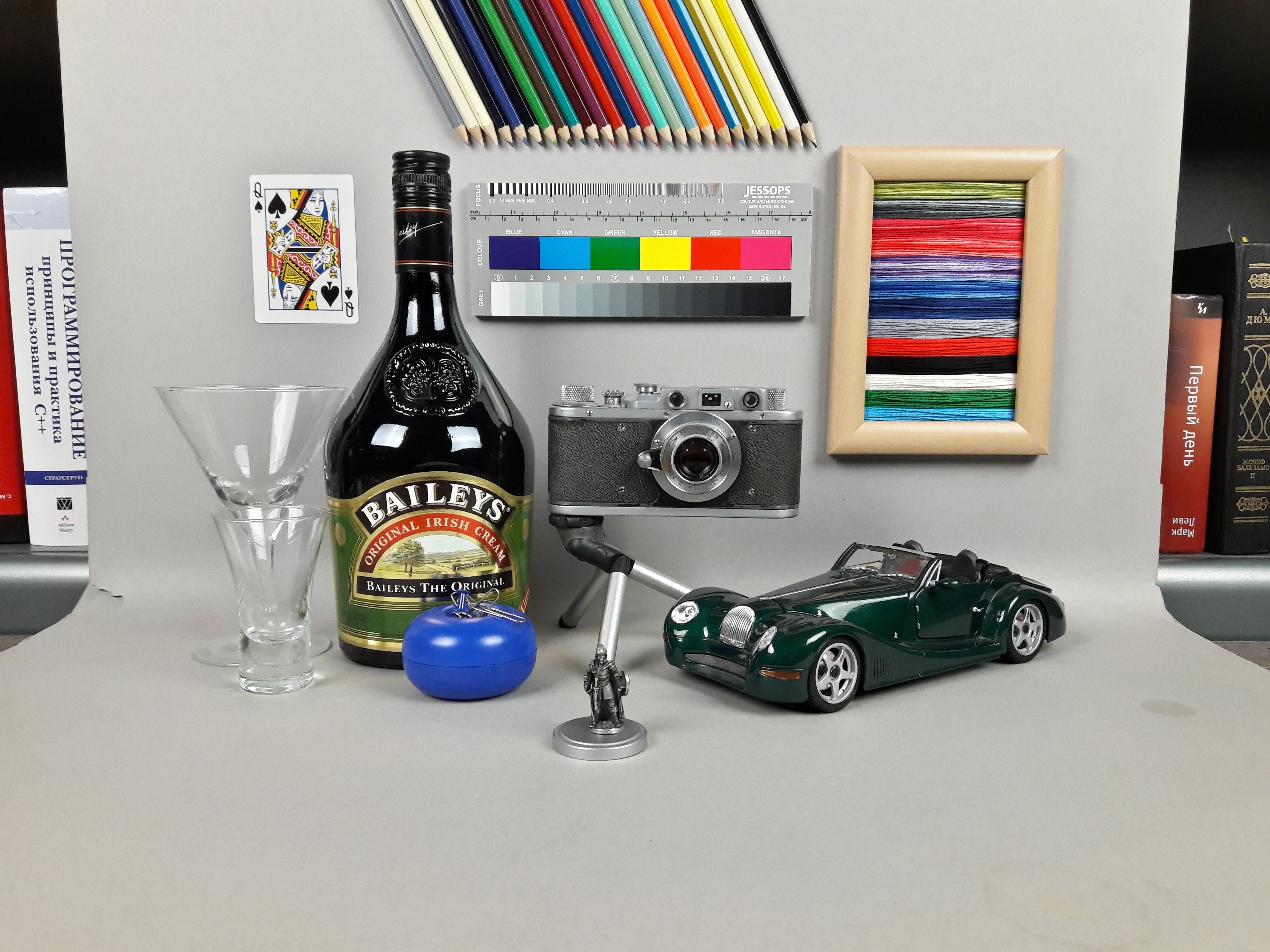











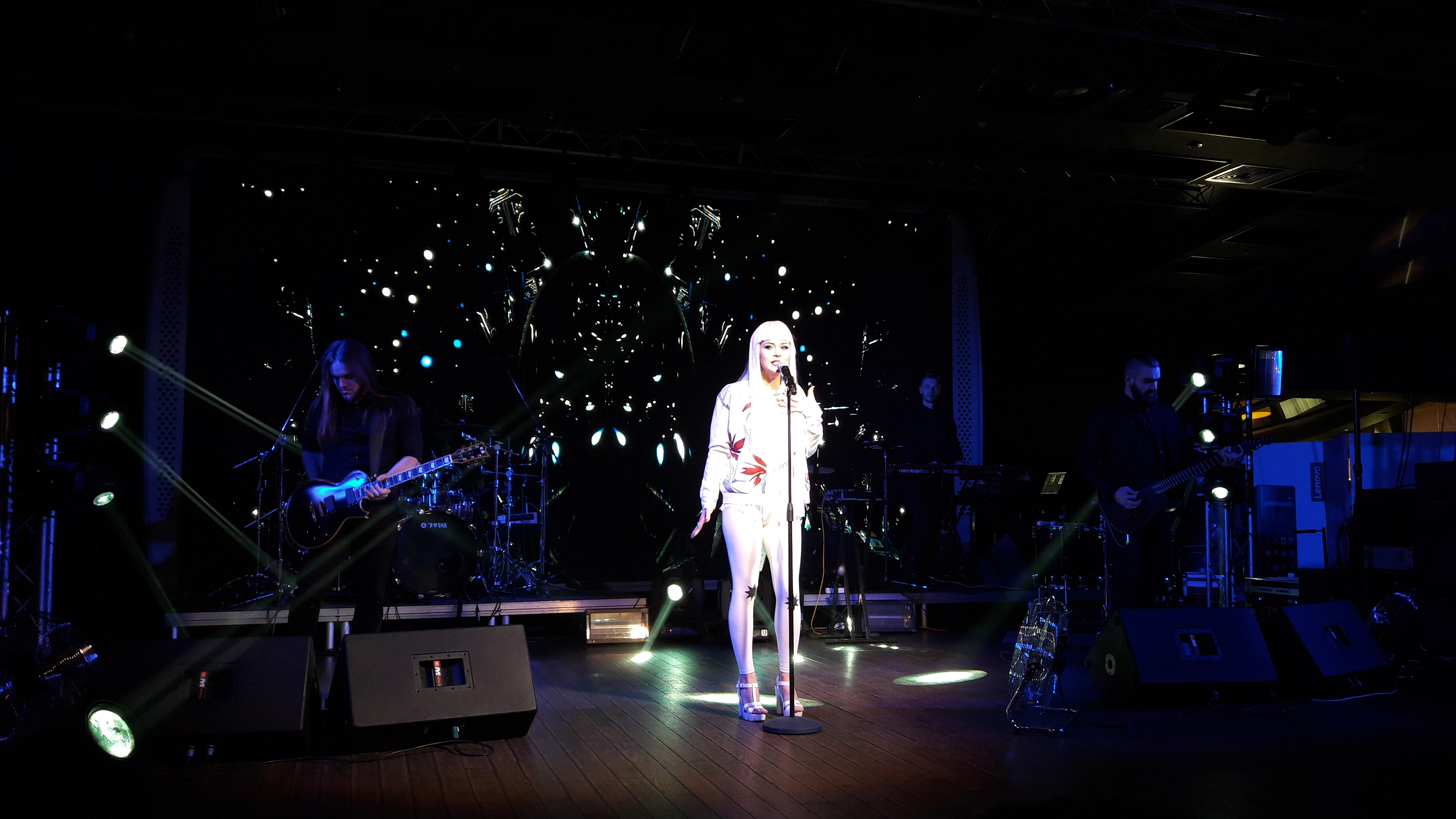

The front camera in the Galaxy A7 (2016) is 5 megapixel with the same f / 1.9 aperture.
Interface
Galaxy A7 (2016) running operating system Android 5.1.1 with the TouchWiz interface... Here it is the same as in the Galaxy S6, S6 edge, S6 edge + and Note 5.
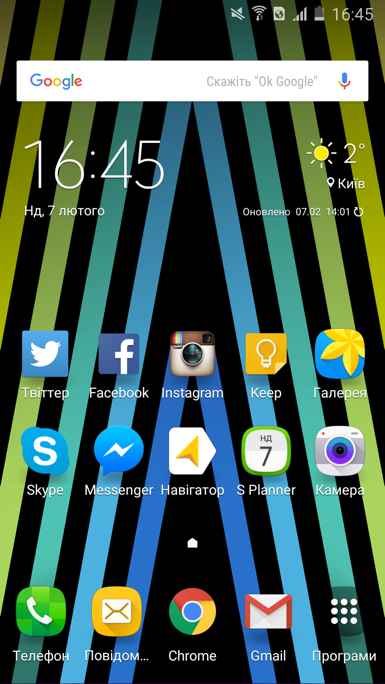
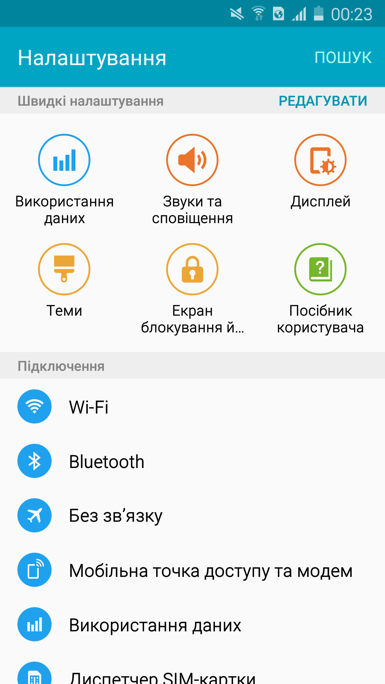
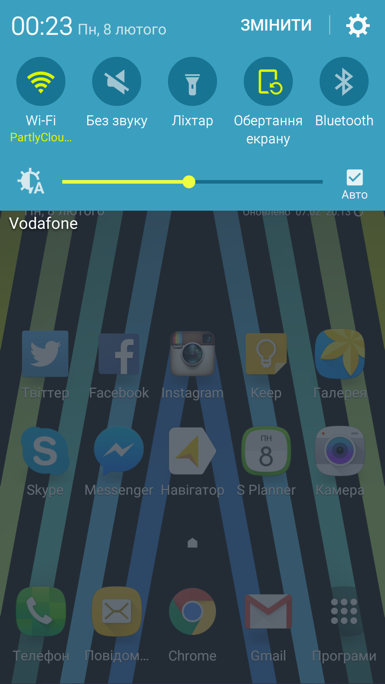

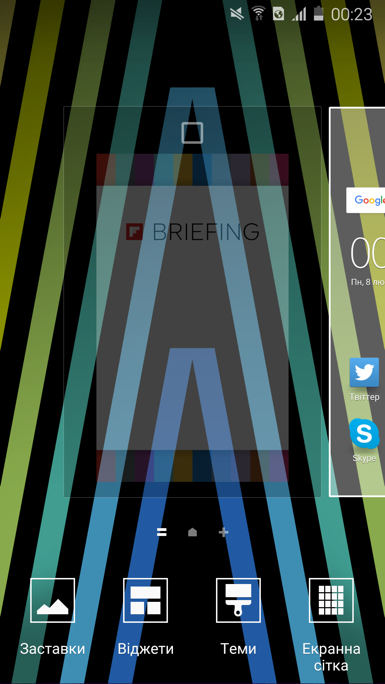
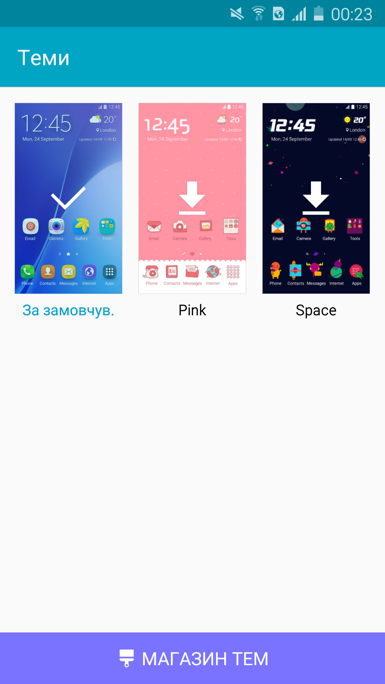
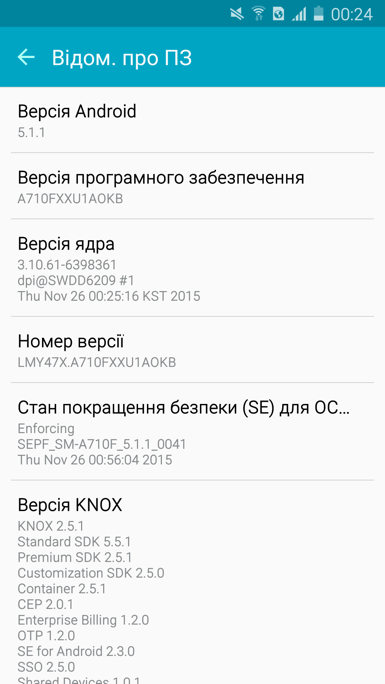
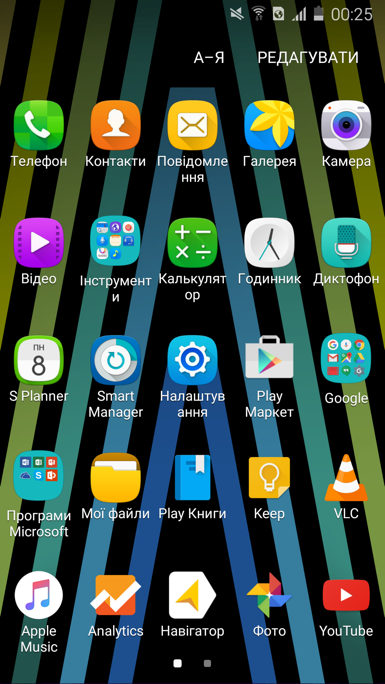

The user can create desktops, place application icons and widgets on them, arrange menus, and change themes.
The fingerprint scanner
The mechanical button located under the display of the Galaxy A7 (2016) houses a fingerprint scanner that allows you to unlock your smartphone and is also used for in-store purchases. Samsung apps Apps and for work payment system Samsung Pay.
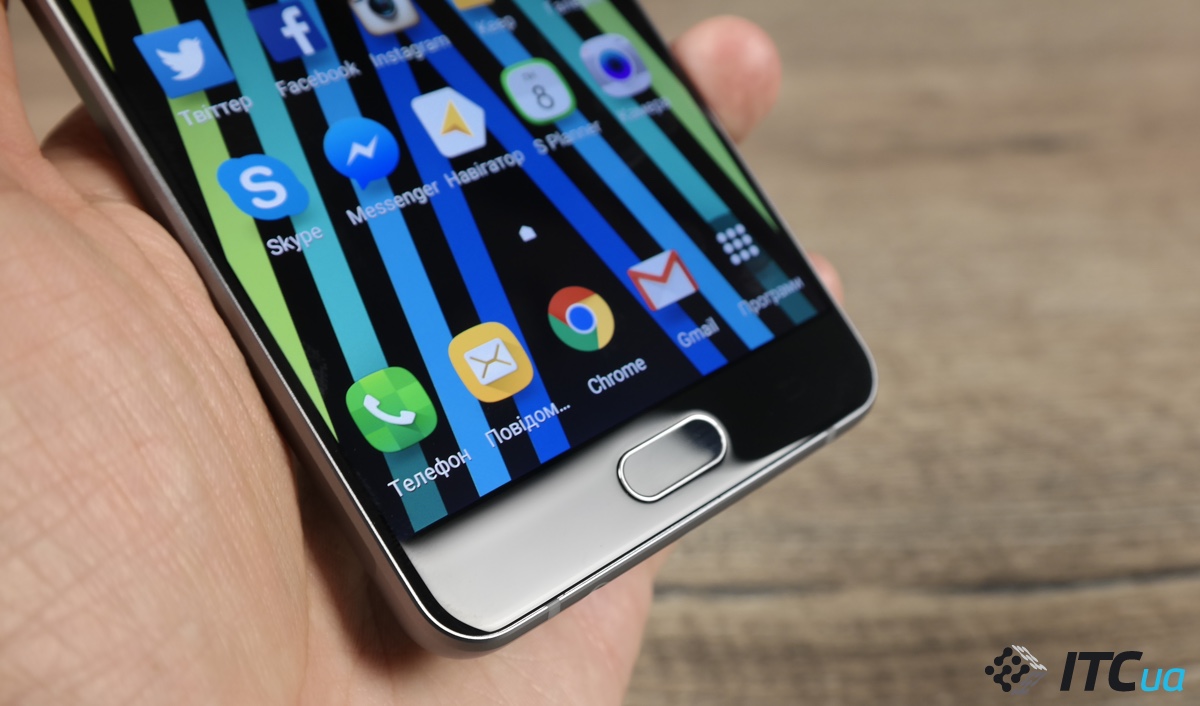
The scanner works in the same way as in the Galaxy S6, the user just needs to put his finger on the button to unlock the smartphone. At the same time, the sensor is triggered quickly, although not as lightning fast as in the Galaxy S6 edge + and Note 5.
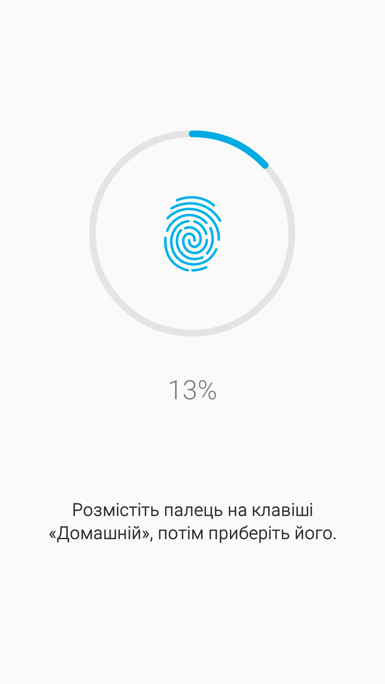
V Galaxy settings A7 (2016), you can add scans of five fingers, while the smartphone is the most convenient to unlock thumbs right or left hand.
Working with two SIM-cards
The Galaxy A7 (2016) has two nano SIM card slots and, in general, the smartphone works correctly with two numbers, allowing you to quickly switch between them right from the curtain of the notification panel. In addition, you can, by default, assign a certain number to voice calls, SMS or data transmission.
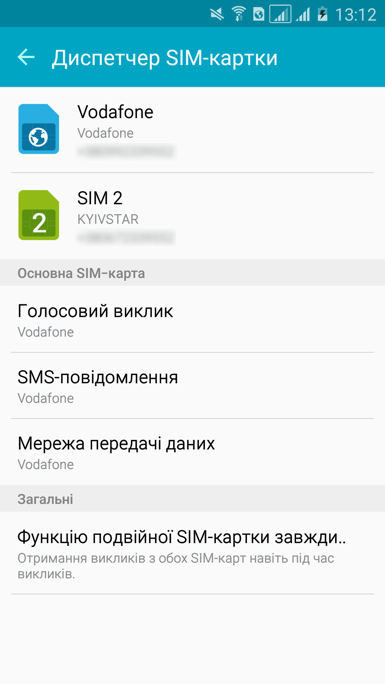

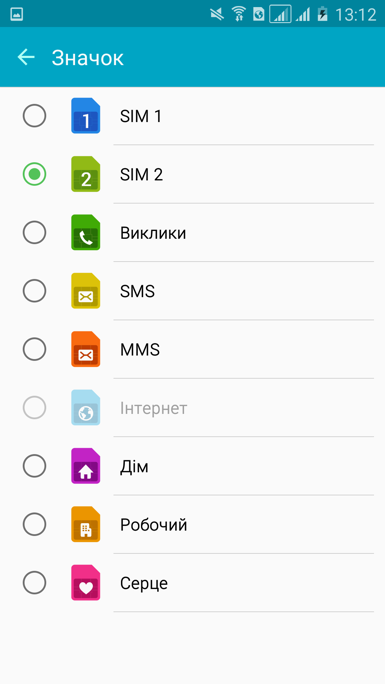



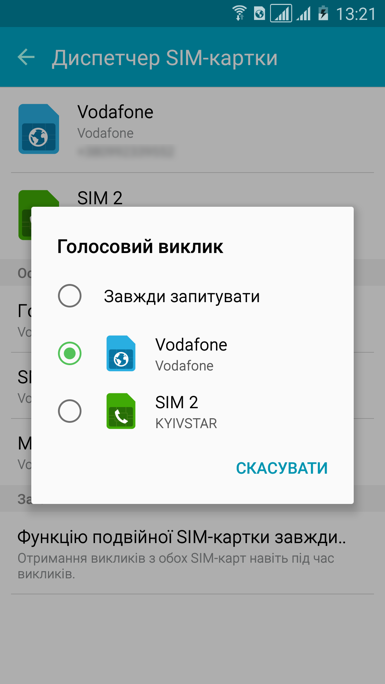
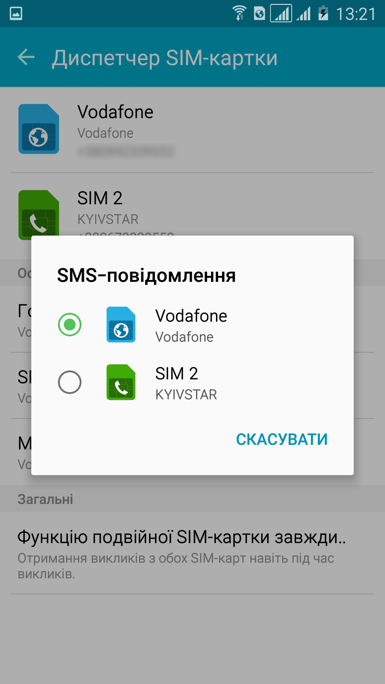
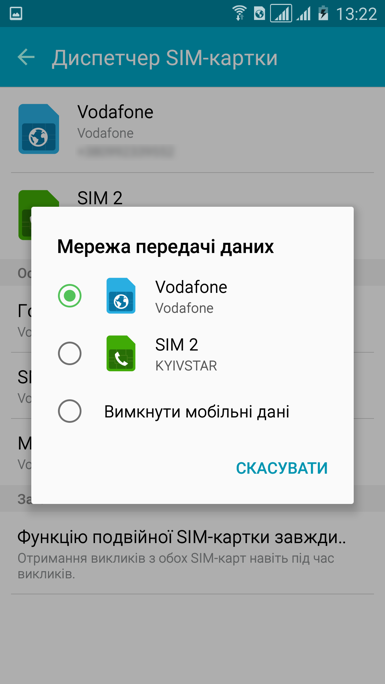
In Galaxy A7 (2016), you can receive calls to the second SIM card while talking on the first one, but this function must be activated separately in the settings. At the same time, you can also forward calls from one to another SIM card, but for this the operator may already charge an additional fee.

If the user does not need a second number, then one nano SIM slot can be occupied with a microSD memory card, thus expanding the 16 GB built into the Galaxy A7 (2016). On the one hand, it is convenient, but on the other hand, the user will not be able to simultaneously use two numbers and a memory card in a smartphone.
Autonomy
The non-removable battery in the Galaxy A7 (2016) has a capacity of 3300 mAh, and in terms of autonomy, the smartphone is frankly pleasing. In the synthetic test Geekbench 3 with an active display, the brightness of which was set at 200 cd / m2, the device managed to hold out for 10 hours 38 minutes until it is fully discharged.
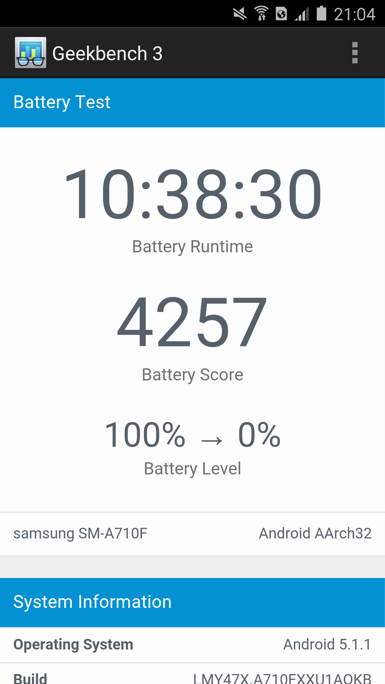
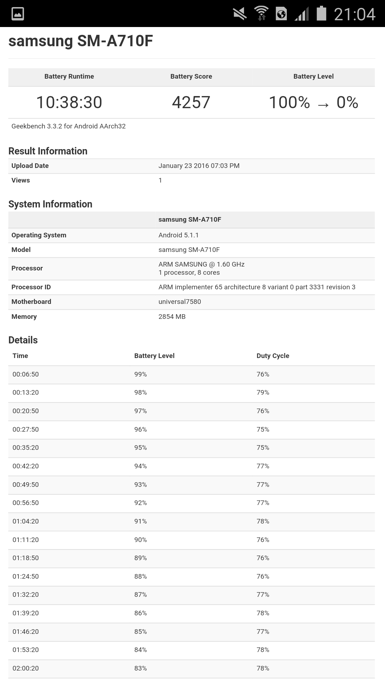
This is a very good result, so the suspicion crept in that the test utility simply does not load the Exynos 7 Octa 7580 processor to the maximum, since it appeared quite recently. However, real use also showed that the Galaxy A7 (2016) is doing well with battery life. Even with very active use, the smartphone quietly holds a charge for 1.5-2 days, and with less active use it can even last for 2-3 days of work. If you enable power saving mode, you can achieve even better results, but in this case, the system will limit the processor's performance.


Galaxy A7 (2016) supports fast charging from Samsung branded charger.

Site evaluation
Pros: design, materials, build quality, display, performance, camera, fingerprint scanner, autonomy, fast charging
Minuses: no auto HDR mode in the camera, no vibration when pressing control keys, no LED to indicate alerts
Output: Galaxy A7 (2016) is a smartphone with design and almost flagship features, which is more affordable than most top models. We must pay tribute to Samsung, the Galaxy A7 (2016) was minimally cut in terms of functionality, leaving only a small gap with the flagships. As a result, the user can count on good body materials, performance, display, camera and fingerprint reader. In order not to create strong competition for their own flagships, the Galaxy A7 (2016) used a screen with Full HD resolution, and not with 2560x1440 pixels, more simple modes shooting for the camera, removed the vibration feedback, as well as the indication of notifications. Nevertheless, it is difficult to call this a big drawback that can spoil the impression of working with a smartphone. Thus, if you are looking for a 5.5-inch model from a well-known brand, then be sure to take a closer look at Samsung Galaxy A7 (2016).
V New Year with new ideas! Of course, this tactic is practiced not only by Samsung, but the update of the flagship "A" line is a really significant event for the entire telephone world. In addition, in 2016, the appearance of three top models in a row is promised: Galaxy A3 (2016), Galaxy A5 (2016) and Galaxy A7 (2016)... On the last of this series, let's dwell in more detail and think about whether there are reasons for the Apple iPhone 6 Plus, Sony Xperia Z3, LG G4 and other leaders to worry about their future?
Signs of a leader
As befits a favorite Samsung Galaxy A7 (2016) has noteworthy differences. Above all, this is a superb 5.5-inch Super Amoled Full-HD display with 1980 x 1080p resolution that delivers top-notch color reproduction and does not change your impression of yourself, even from sharp viewing angles. Another desirable feature for most connoisseurs of "filling" is the size of the RAM, which has reached the milestone of 3 GB. So you will have to forget about slowdowns and nervous boredom while loading applications. Well, the third elite bonus is a 3300 mAh super battery with an express charging function, which in relation to other parameters and characteristics of the matrix is really a step forward.
For whom and why?
Maybe this is a bit unexpected, but fans of large-sized phablets and owners of long fingers will be able to give the device a truly worthy assessment. And the reason for this is that the gadget has significantly stepped over the boundaries of compactness. The dimensions of 151.5x74.1x7.3 mm and the weight of 172 g clearly indicate this and take a little time to get used to. Reflected in the shape and thickness of the case, the refined harmony of metal and glass remains a hallmark and a sign of quality.
Key features
The gadget is built on an 8-core Octa-core platform, with a frequency of 1.6 GHz. Perhaps, not everyone admired the block of permanent memory of 16 GB, but taking into account the other advantages, this conditional modesty does not interfere with treating the new product as a top model. The storage can be expanded up to 128 GB by expanding.
The new camera A7 (2016) is equipped with an optical image stabilization mechanism and an LED flash at the same resolution as before - 13 megapixels. The 5MP front camera only enhances the pleasant experience. Also, a fingerprint sensor came to the rescue. What makes the device truly unique is the support of the Samsung Pay payment system, the only question is whether support for this function will be available in Russia.
Let's hope that the Android v5.1.1 (Lollipop) operating system will be updated to the sixth version by the start of sales, but this is not at all necessary. Europe expects a new phone to hit the market at a price of 469 euros.
In early December last year, Samsung officially presented the second generation popular smartphones series Samsung Galaxy A, the more distanced itself from the budget market mobile devices... The updated lineup received stylish cases made of glass and metal, a powerful hardware platform and improved camera modules, as well as full support for electronic payments Samsung Pay through the built-in fingerprint scanner and wireless NFC chip.
We managed to get the oldest device from the presented line for the test - a smartphone SamsungGalaxyA7 (2016) , which will allow the most complete and detailed acquaint you with all the changes and innovations of the updated series. What interesting opportunities this device possesses and what interesting things we managed to find out during testing - you can find out from a further review. But first, let's consider specifications device under test.
Specification
|
Manufacturer and model |
(A710F) |
||
|
Type, form factor |
Smartphone, candy bar |
||
|
Communication standards |
850/900/1800/1900 MHz |
||
|
850/900/1900/2100 MHz |
|||
|
800/850/900/1800/2100/2300/2600 MHz |
|||
|
Data transfer |
GPRS (32-48 Kbps), EDGE (236 Kbps), HSDPA (up to 42.2 Mbps), LTE Cat.6 (up to 300 Mbps) |
||
|
SIM card type |
|||
|
CPU |
|||
|
Graphics adapter |
ARM Mali-T720 MP2 (600 MHz) |
||
|
5.5 ", Super AMOLED, 1920 x 1080 (400 ppi), touch (10 touches), 2.5D Gorilla Glass 4 protective glass |
|||
|
RAM |
|||
|
Persistent memory |
|||
|
Card reader |
microSD (up to 128GB) |
||
|
Interfaces |
1 x 3.5mm audio mini-jack |
||
|
Multimedia |
Acoustics |
||
|
Microphone |
|||
|
The main |
13 MP (f / 1.9, autofocus, OIS, 1-section LED flash, 1080p video recording) |
||
|
Frontal |
5 MP (f / 1.9, fixed focus, wide-angle optics, 1080p video recording) |
||
|
Networking capabilities |
802.11a / b / g / n Wi-Fi (2.4 and 5 GHz, Wi-Fi Direct), Bluetooth 4.1, NFC, GPS, GLONASS, ANT + |
||
|
Accelerometer, Geomagnetic Sensor, Light Sensor, Proximity Sensor, Hall Sensor, Digital Compass, Fingerprint Scanner |
|||
|
Battery |
Lithium-ion, non-removable: 3300 mAh (function fast charging) |
||
|
Charger |
Input: 100 ~ 240 VAC ex. at 50/60 Hz Output: DC 5V e.g. 1 A |
||
|
151.5 x 74.1 x 7.3 mm |
|||
|
Black, white, gold |
|||
|
Operating system |
Android 5.1.1 Lollipop + TouchWiz |
||
|
Official guarantee |
12 months |
||
|
Products webpage |
|||
Appearance, arrangement of elements
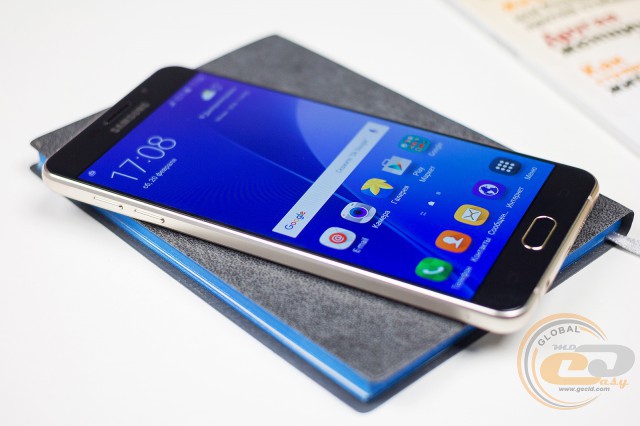
Formally, Samsung Galaxy A7 (2016) belongs to the middle class of mobile devices, but from a visual point of view and tactile sensations, it can be easily mistaken for a real flagship. This is due to the stylish and very elegant design paired with premium body materials that migrated here directly from eminent relatives ().
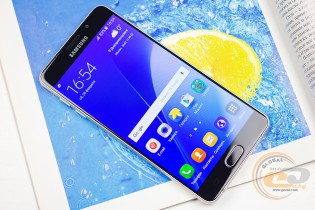
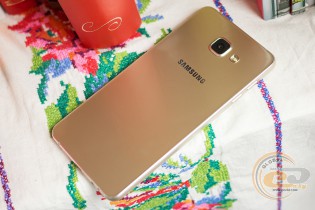
The frame of the smartphone is made in the form of an all-metal frame made of high-quality anodized aluminum, which is covered on both sides by two thin and very strong pieces protective glass 2.5D Gorilla Glass 4 with superior oleophobic layer. The color of the monitored gadget is golden (white and black options are available), which further emphasizes its high status.

Despite the large 5.5-inch screen and not the most modest dimensions, the Samsung Galaxy A7 (2016) looks very neat and elegant, which is the main merit of small frames around the display (15 mm top and bottom, 3 mm on the sides) and extremely small the thickness of the case is only 7.3 mm. Nevertheless, it is quite problematic to operate a smartphone with one hand - it is corny that the length of the fingers is not enough, which is why, in general, a rather slippery device has to be intercepted often.
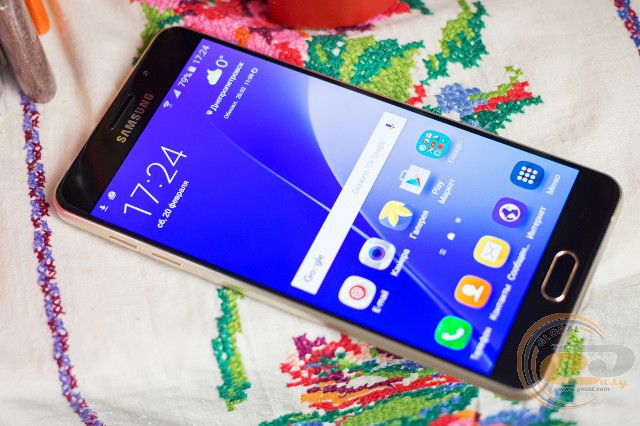
Traditionally for devices from the South Korean company, Samsung Galaxy A7 (2016) is distinguished by a well-thought-out arrangement of controls and their high functionality. The side buttons are well defined, and the built-in fingerprint reader quickly creates an impression (you can store up to 5 copies in the device's memory) and is almost instantly responsive to touch. In addition to unlocking your smartphone and making purchases in the Samsung Apps store, it supports working with electronic system payments Samsung Pay, which, unfortunately, is not yet available in Ukraine and Russia.
Above the smartphone screen are located: the earpiece, the proximity sensor and the light sensor, the front camera lens and the manufacturer's corporate logo, and under it there are three familiar control buttons: the mechanical "Home" (equipped with the aforementioned fingerprint scanner) and two touch buttons ("Back" and "Menu") with pleasant LED backlighting. On the top edge of the device is an additional microphone, while the bottom is occupied by a 3.5 mm audio jack for a headset, a micro-USB port, a multimedia speaker grill and another microphone. The left side of the device contains two volume keys, and the right one contains a power button and a combined slot that allows you to install either two SIM cards of the Nano-SIM format, or one SIM card and a microSD memory card.
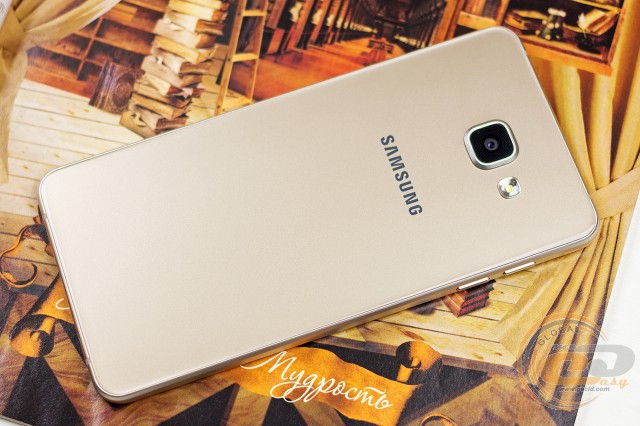
The back side of the Samsung Galaxy A7 (2016) is made in the form of a non-removable part, which makes it impossible to replace the battery yourself. It houses the lens of the main camera, a single LED flash and a large manufacturer's logo.
The build quality of the reviewed smartphone does not cause even the slightest complaints. All elements of the body are fitted very tightly, and the structure of the device itself is a real monolith. When you try to twist and press on the front or back, nothing bends, and the image on the screen remains free of visible streaks and artifacts.
Display
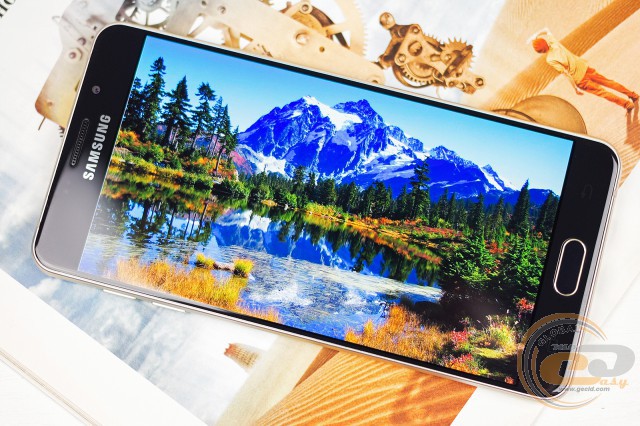
The Samsung Galaxy A7 (2016) has a 5.5-inch display with a resolution of 1920 x 1080 and a pixel density of 400 ppi, which is based on a proprietary Super AMOLED matrix. It features excellent color saturation, excellent detail and near-perfect contrast. The viewing angles are maximum, and only with critical deviations, a barely noticeable rainbow shift of the color balance appears on the screen.
The backlight has a very high brightness reserve, with a fairly wide range of adjustments, including automatic mode, which makes it equally convenient to work with a smartphone both on a bright sunny day and in low light conditions.
Built-in touch pad supports up to 10 simultaneous clicks. The sensitivity is excellent - everything works quickly and accurately, without false alarms and other inconveniences.
Audio subsystem
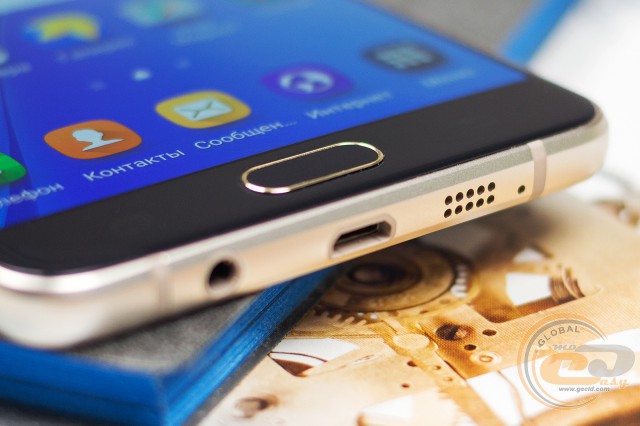
The Samsung Galaxy A7 (2016) has one multimedia speaker. Due to its good location on the bottom edge, it is practically not muffled and can provide high-quality and rather loud sound in the entire available range - there are pronounced high and medium frequencies, and sometimes there is a hint of bass.
The sound in the headphones is balanced and pleasant. It has a sufficient volume reserve and tangible depth. An additional positive effect is created by proprietary software add-ons and a built-in equalizer, the activation of which adds saturation and volume to the sound.
Camera
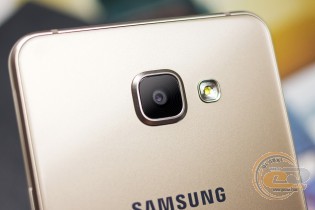
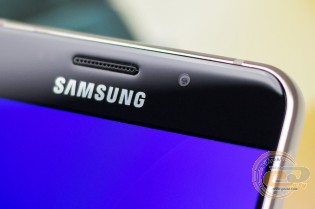
The digital arsenal of the smartphone is represented by two cameras: the main one is a 13-megapixel module with an aperture of f / 1.9, optical stabilization image and single-section LED flash, and front - 5-megapixel module with an aperture of f / 1.9 and wide-angle optics. Both of them are capable of recording video at a maximum resolution of up to 1080p at 30 fps.
The photo and video materials obtained with their help are of excellent quality, natural color reproduction and sufficiently deep image detail. Separately, it is worth mentioning the improved "HDR" function and a good shooting mode "Night", which significantly improve the quality of photos in low light conditions, and also help get rid of the characteristic artifacts when the noise reduction system is triggered.
Branded software, which is responsible for the operation of cameras, has a simple and at the same time quite functional interface (it is launched from any state by double-clicking on the "Home" button). As in the flagship models, the software contains an extensive set of capabilities and allows you to very finely adjust the process of photo and video shooting, with the exception of the focal length, which remains fixed even in manual mode.
Examples of photography
Examples of photography in the "HDR»
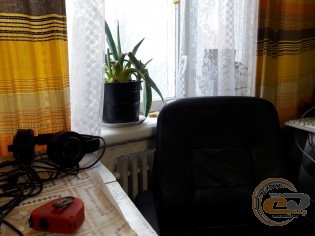
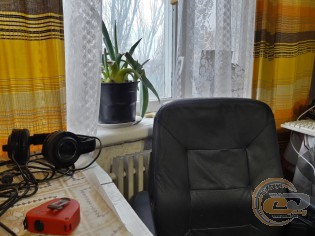
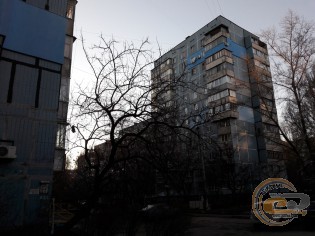
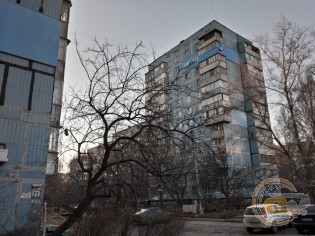
Examples of photography in the "Night" mode




Examples of filming
An example of daytime shooting from a smartphoneSamsung
Galaxy
A7 (2016) 1080p @ 30fps
Custominterface
Samsung Galaxy A7 (2016) runs an operating room Android systems 5.1.1 Lollipop as amended latest version branded shell TouchWiz. You can learn more about the interface and capabilities of this software bundle from our previous review of the flagship smartphone. The only slight difference will be the lack of an IrDA in the reviewed model and, as a result, some pre-installed software that allows you to control household and multimedia equipment in the house.
As for the speed of the operating system and the proprietary shell as a whole, it is pleasantly pleasing and deserves only positive feedback... Everything functions quickly and very smoothly, without the slightest hint of jerks or hesitation.
Performance and communication capabilities
The reviewed smartphone is built on the basis of a productive hardware solution - an 8-core microprocessor Samsung Exynos 7 Octa (7580) s clock frequency 1.6 GHz, which is based on the 64-bit ARM Cortex-A53 microarchitecture in accordance with the 28nm process technology. It is complemented by a built-in graphics adapter ARM Mali-T720 MP2 with an operating frequency of 600 MHz and support for OpenGL ES 3.1, OpenVG 1.1 and DirectX 11. The amount of RAM is 3 GB, and 16 GB of permanent memory, of which about 11.03 GB is available. If desired, it can be easily expanded with microSD memory cards up to 128 GB.
As can be seen from the results obtained, the performance of the hardware platform is at high level... The presence of 8 processing cores and 3 GB of RAM allow you to effortlessly cope with any tasks, including running modern games at maximum graphics settings. Unfortunately, the reverse side of the coin is a rather noticeable heating of the device, which is especially noticeable near the lens of the main camera and on the sides of the body. However, this nuance is a distinctive feature of almost all productive modern mobile devices in slim body made of metal or glass.
By default, the smartphone recognizes most of the popular video and audio formats, including MKV and MP4 containers, which is very convenient given their wide distribution.
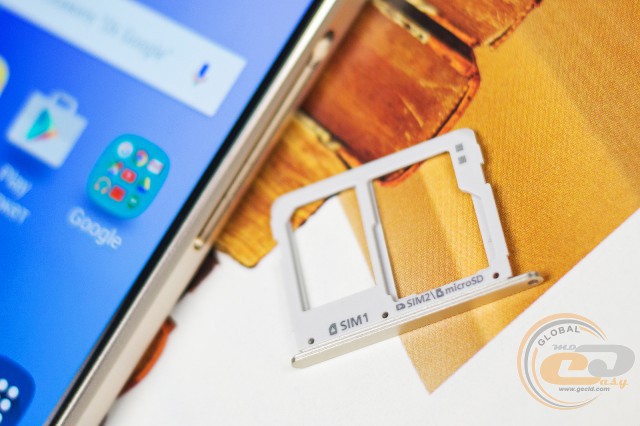
Dual SIM radio module in Samsung Galaxy A7 (2016) with support for Nano-SIM cards allows you to make phone calls using the 2G GSM standard (850/900/1800/1900 MHz) in Dual mode SIM Dual Standby, as well as transfer data to mobile networks 3G UMTS (850/900/1900/2100 MHz) and 4G LTE (800/850/900/1800/2100/2300/2600 MHz) at speeds up to 300 Mbps. He does an excellent job with the task and does not cause the slightest complaints. Communication quality is good: the speaker and microphone clearly and loudly transmit the voices of the user and the interlocutor. But the built-in vibrating alert seemed weak, which is why you can easily miss an incoming call in a particularly noisy environment.
More traditional ways of transferring data in Samsung Galaxy A7 (2016) are represented by wireless modules Bluetooth 4.1 and Wi-Fi 802.11a / b / g / n (2.4 and 5 GHz) with Wi-Fi function Direct. The device also has an NFC module that allows you to make electronic payments in Samsung system Pay.
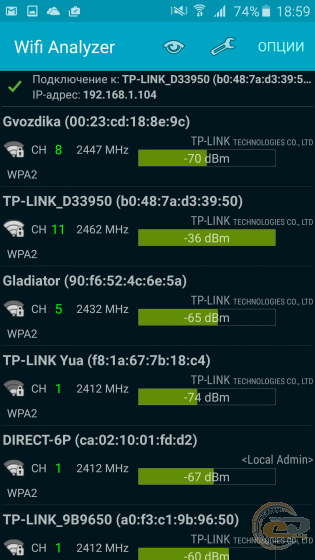
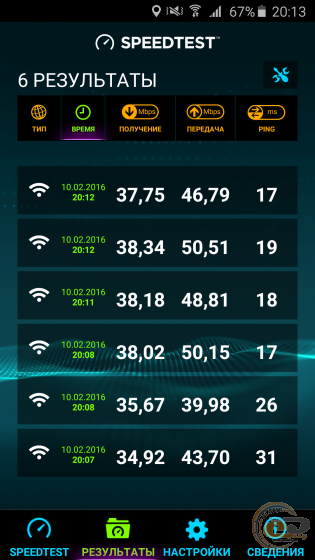
Search Wi-Fi points and the connection to them is fast, and the established connection has good stability.
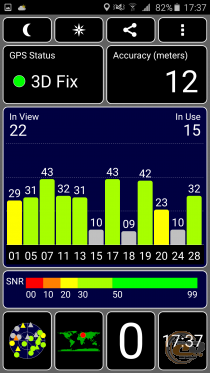
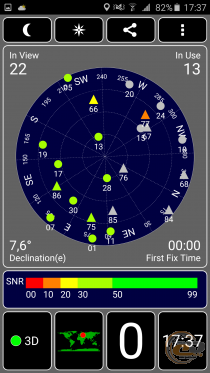
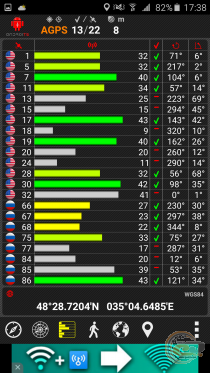
The built-in geolocation module supports two navigation systems - GPS and GLONASS. It has good accuracy (12 m) and enough high speed search - the “cold” start time on average takes about 10-15 seconds.
Autonomous work
Samsung Galaxy A7 (2016) is equipped with a non-removable lithium-ion battery quite impressive capacity - 3300 mAh, which in conditions of moderate use when performing everyday tasks will be quite enough to provide more than 2 days of uninterrupted operation of the device from a single charge.
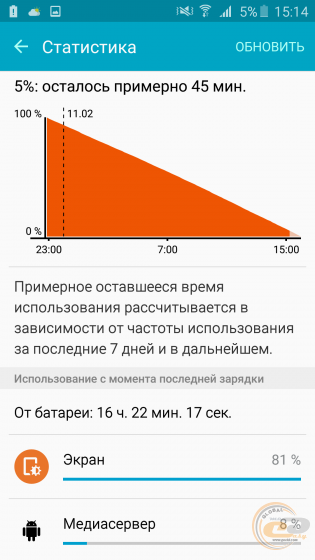
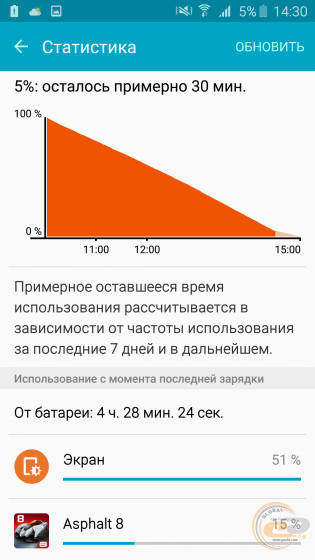
So, when watching HD-video (MPEG-4 / AVC, M4V container, 4 Mbps stream) the device was able to hold out for almost 16.5 hours, and in the game simulation mode (Asphalt 8: Airborne) - 4.5 hours.
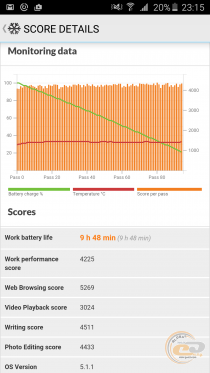

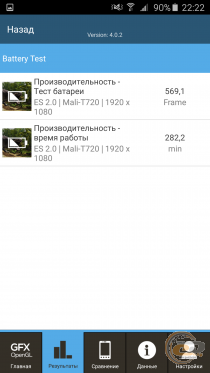
The estimated battery life according to the PCMark benchmark was 9 hours 48 minutes, and according to the Geekbench 3 battery test - 11 hours and 50 minutes, while the GFXBench benchmark gave a result of 282 minutes. In all cases (except for the gaming one), the display brightness was 50%, and the Wi-Fi and GPS modules were also turned on.
From a standard charger (5 V, 1 A), the smartphone battery is fully recovered in 3.5 hours. The device also has a fast charging function (less than 2 hours), which is available only with chargers that support Samsung Adaptive Fast Charging.
Outcomes

In truth, the second generation of Samsung Galaxy A series smartphones in the person of the monitored guest exceeded all our expectations. Instead of the predicted minimal changes and the next "solid middle peasant", we got a real flagship device, which only by the will of marketers took intermediate positions in lineup companies.
First of all SamsungGalaxyA7 (2016) pleased us with a truly stylish and elegant appearance. The perfect combination of glass and metal, and the almost jewelry work on fitting individual case details, definitely deserve praise and warm words addressed to the developers. The smartphone looks and feels expensive, which is important given the class of the device and the level of competition in this market segment. Secondly, it is worth mentioning a high-quality 5.5-inch Super AMOLED display (almost perfect contrast and excellent image detail) and improved camera modules, which, thanks to the support of proprietary technologies and excellent functional properties, will pleasantly surprise even the most skeptical user. As for the internal hardware platform, it is capable of solving any assigned tasks, including launching demanding game projects at maximum graphics settings. The only controversial nuance may be a noticeable heating of the case during a prolonged active load, which, however, is a distinctive feature of almost all productive modern mobile devices in a thin glass or metal case.
Otherwise, the Samsung Galaxy A7 (2016) definitely deserves attention from a huge audience of users and our “High functionality!” Award, as a high-quality and high-performance device with a sleek design and a wide range of features.
Advantages:
- stylish and elegant design;
- excellent build quality;
- convenient and fast fingerprint scanner;
- gorgeous 5.5-inch screen;
- high quality and loud multimedia speaker;
- high-quality camera modules;
- high level of productivity;
- support for two SIM-cards in Dual SIM Dual Standby mode;
- excellent communication capabilities due to the presence of all the necessary wireless modules;
- good level of autonomy.
Peculiarities:
- one of the slots for the SIM card is aligned with the slot for the microSD memory card;
- the built-in NFC module is designed for electronic payments in the Samsung Pay system.
Disadvantages:
- sufficiently slippery materials of the case;
- noticeable heating during long-term active use.

We express our gratitude to the companySamsung for the smartphone provided for testing.
The second generation is a symbiosis of the design of the stylish flagship Galaxy S6 and the significantly improved technical equipment of last year's model. For example, a fingerprint scanner appeared, the hardware was updated and the battery capacity increased significantly. What after all the transformations the gadget turned out to be, we will tell later in the review.
Design and functional elements
Yes, the design of the Galaxy A7 (2016) is unoriginal, but it was not "borrowed" from anyone, but from the flagship S6 itself. From afar, confusing smartphones is as easy as shelling pears - outwardly they are almost identical. The body is based on a metal frame, and the screen and back panel are protected by slightly convex 2.5D Gorilla Glass 4.
But, despite the high-quality materials and perfect assembly, which provide the tested model with structural reliability, I would still not recommend dropping the A7 - glass is glass. It looks, of course, beautiful and expensive, but if handled carelessly, it tends to beat and scratch. Another disadvantage of such a surface is soiling. Particularly good for fingerprinting material is the back panel of the device in a black color, similar to the one I got for the test. The white and gold versions of the smartphone are, I think, less susceptible to fingerprints.
As for the location of the control buttons and other functional elements on the body of the new A7, it is also somewhat similar to that of the flagship S6: on the left, for example, there are volume control buttons, and on the right is the power key and a hybrid slot.
The upper end of the gadget is dedicated to the noise-canceling microphone, and the lower end to the 3.5 mm audio output, microUSB port, second microphone and multimedia speaker grill.
The rear panel of the model is notable for only a slightly protruding camera lens, framed by a metal ring, LED flash and the manufacturer's logo.
Conversational speaker along with front camera, light and proximity sensors are equipped above the screen.
Unlike last year's A7, the 2016 model has a fingerprint sensor, which again pushes the novelty closer to the premium segment. It is built into the mechanical Home button and stores up to 5 prints. The sensor works quickly and clearly, so you don't have to apply your finger several times. The traditional touch-sensitive buttons on the sides of the control room are brightly backlit for easy operation in the dark.
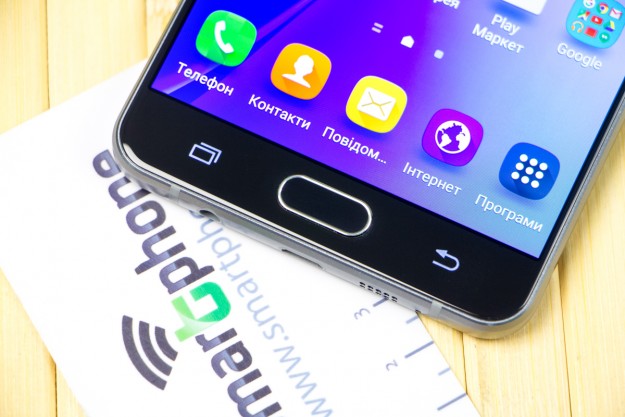
It would seem that with a large screen diagonal and rather large dimensions - 151.5x74.1x7.3 mm and a weight of 172 g, it is extremely inconvenient to operate a smartphone with one hand. However, in the settings of the smartphone, the "One-handed operation" mode is provided specifically for this purpose. In addition, you can simplify navigation through its menu using the "Simple screen mode" option.



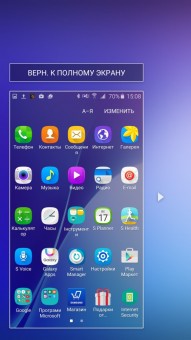


Display
Like last year's model, the Galaxy A7 (2016) is equipped with a 5.5-inch Super AMOLED screen with a resolution of 1920 x 1080 pixels. Pixel density per inch 401.
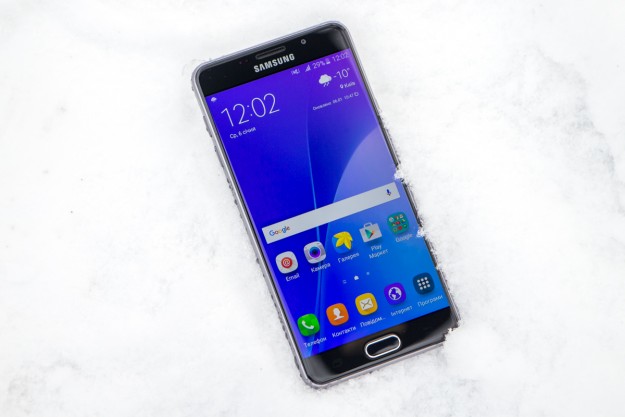
The screen is crisp and clear even in bright sunlight, and the viewing angles are wide both horizontally and vertically. In my subjective opinion, the display of the tested model is one of the best in its segment.
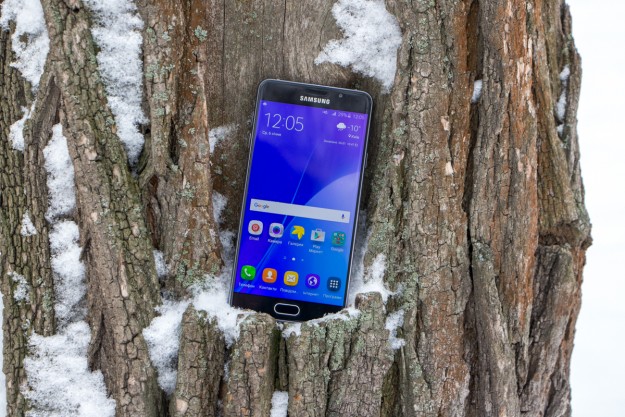
In its settings, you can choose one of four display modes, manually adjust the backlight level, or turn on automatic.



I also note a very sensitive sensor that supports up to 10 simultaneous touches, and an excellent oleophobic coating, thanks to which the finger glides over the panel easily, and fingerprints are invisible and quickly eliminated.
Hardware and performance
If in terms of design, the Galaxy A7 has everything like the flagship S6, then on hardware, for the sake of a much more affordable price tag, the company's engineers still had to save money. Under the hood of the smartphone, the proprietary 8-core Exynos 7580 processor with a clock frequency of 1.6 GHz and Mali-T720 graphics work. The amount of RAM is 3 GB.
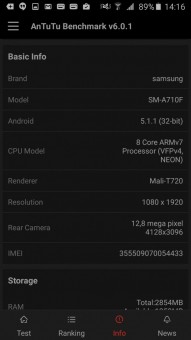
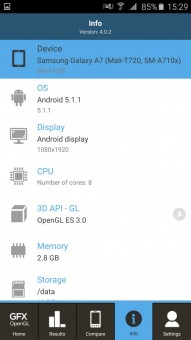
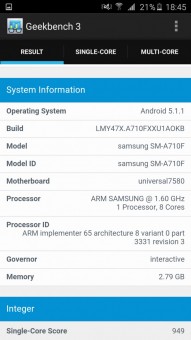
In benchmarks, the smartphone shows average results, but with daily use, I did not notice problems or lack of performance: Full HD video plays smoothly, "heavy" games from the category of Asphalt 8 and Dead Trigger 2 run smoothly.
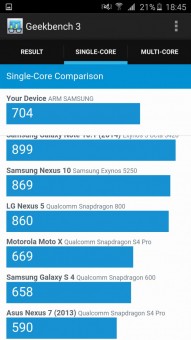
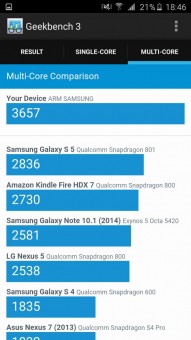
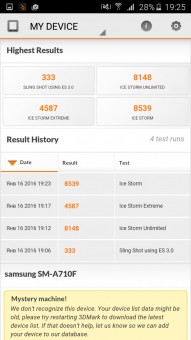
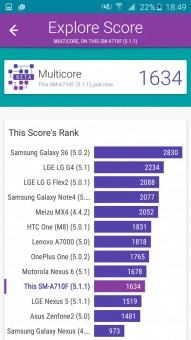
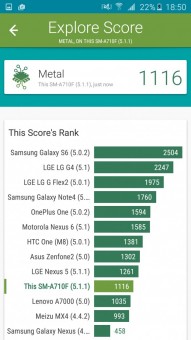
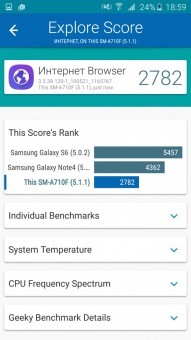
Memory
Of the 16 GB of built-in memory of the smartphone, the user has about 10.5 GB at his disposal. At first, this should be enough, but then you can use both external USB drives and microSD memory cards up to 128 GB to expand it.

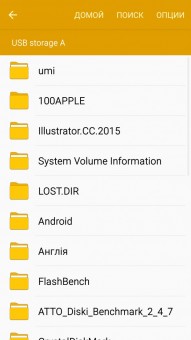

Communication capabilities
The slot for a memory card, let me remind you, in the Galaxy A7 (2016) is combined with one of the slots for a nanoSIM card, so the user will have to choose: expand the volume of the Flash drive or use two SIM cards. The latter, by the way, support networks 2, 3 and 4G.
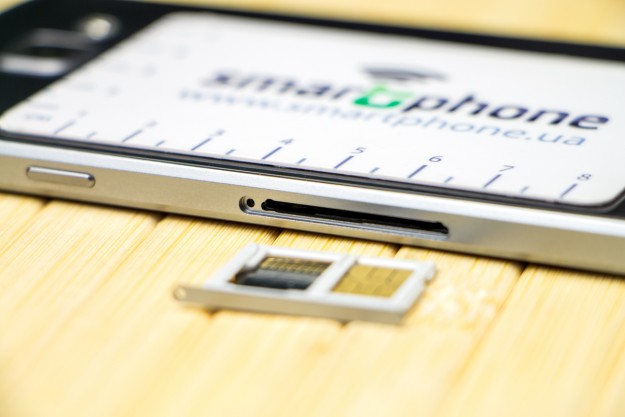
And also new Galaxy A7 has a complete set of modules wireless: Wi-Fi 802.11 a / b / g / n 2.4 + 5.0 GHz, HT40, Bluetooth v4.1 (A2DP, AVRCP, DI, HFP, HID, HOGP, HSP, MAP, OPP, PAN, PBAP) , ANT +, GPS and GLONASS.






There is even an NFC chip, which is designed not only for exchanging information with compatible smartphones via the Android Beam standard, but also for making contactless payments. In turn, the smartphone can be connected to car infotainment systems via the MirrorLink protocol.
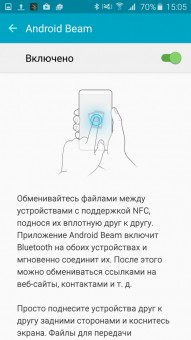


Autonomy
Time autonomous work the new Galaxy A7's 3,300mAh battery is more than satisfactory. And unsurprisingly, its battery capacity is 750mAh larger than that of the S6 flagship. For example, Full HD video from 100% battery charge at maximum screen brightness and with Wi-Fi turned on on the A7 can be watched for 9 hours, and you can drive in the Minion Rush 3D runner with the same settings for about 6.5 hours.
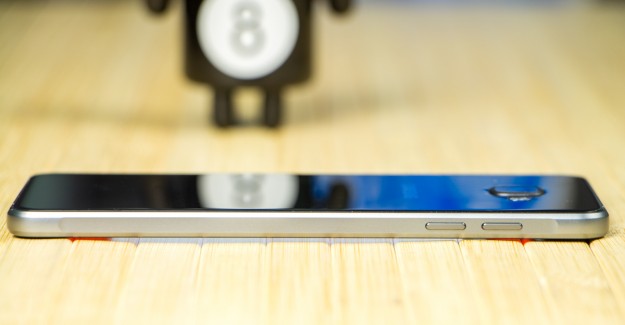
At medium loads, the smartphone can work without recharging for up to two days. In addition, to save energy in the settings, you can use one of the two proprietary power saving modes at any time: normal and extreme.


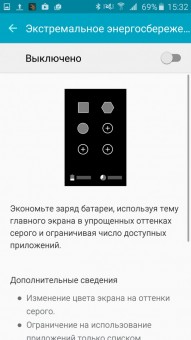
Cameras
To control the 13MP main Galaxy camera A7 (2016) can use voice, and 5MP frontal both voice and gestures.
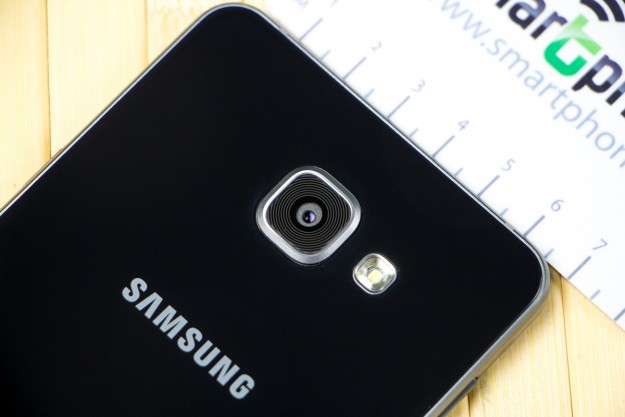
Both photomodules record Full HD video and, in my opinion, fully justify their resolution with their capabilities.
- Test video
The main camera A7, for example, proved to be excellent not only during photo and video shooting in daylight, but also during night photography. Apparently, a powerful LED flash and accurate autofocus played an important role in this.
- Test photos
Also in stock HDR mode, continuous shooting and "professional" mode, which allows you to manually adjust a number of parameters.


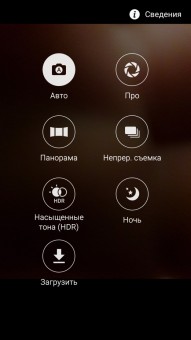



The front camera, in addition to self-portraits, also takes good group selfies. Well, at least it's not a shame to post them on social networks.
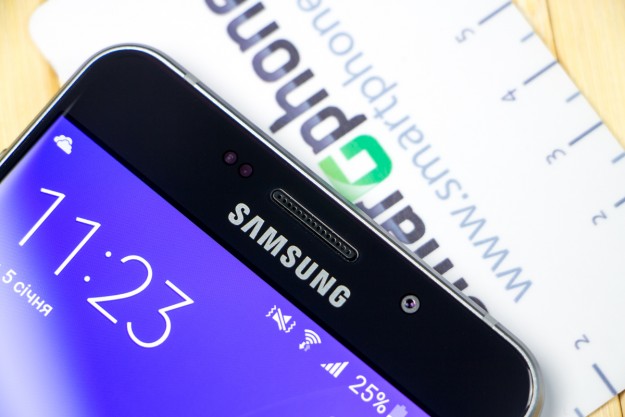
Loudspeakers
Music lovers should like the new Galaxy A7. The smartphone sounds powerful and clear in all ranges of volume and frequencies.
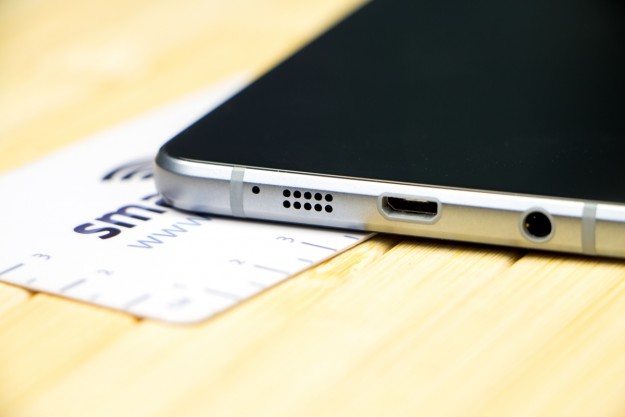
To play audio files, a proprietary player is used, all sound effects in which are combined by SoundAlive technology. In addition, in the settings you can activate tube amplifier and optimize the sound. An FM radio is also present and uses headphones as an external antenna.

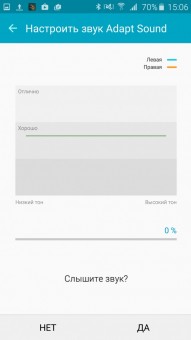
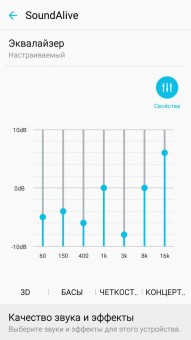
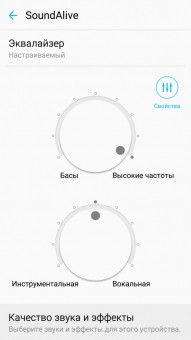

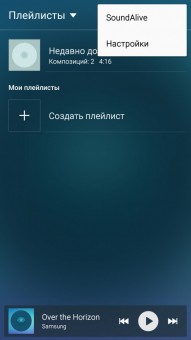
There are also no complaints about the conversational dynamics of the smartphone - it accurately conveys the interlocutor's speech, without distorting the timbre and intonation. Its volume reserve is enough even for noisy places, for example, in public transport.
ON
As software platform Galaxy A7 (2016) uses Android 5.1.1 Lollipop.
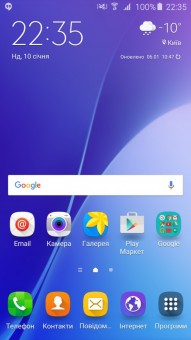
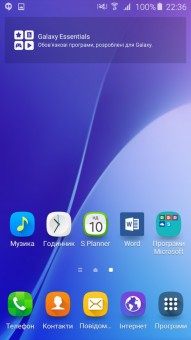
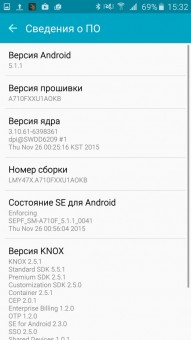
Of the preinstalled programs, the most interesting are the branded applications S Planner, S Health and S voice, there is also the Kaspersky utility Internet Security, wide range Google services and office programs Microsoft.
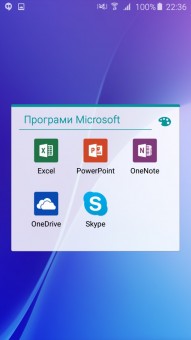
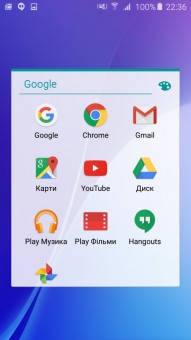
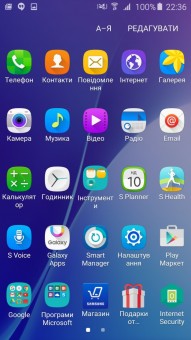
Among other software chips, the smartphone supports the "Smart Off" function - the device screen remains on while the user is looking at it, as well as the control function using gestures.
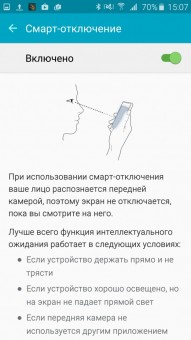


conclusions
Well, the new Galaxy A7, in my opinion, turned out to be incredibly successful, although not cheap - 400 euros at the start of sales. However, having bought it, you are unlikely to regret it. From a technical point of view, the smartphone copes with any tasks: resource-intensive games, video playback in high definition, plus everything is perfectly prepared for working away from the outlet. Its autonomy can be envied by most flagships, including the Galaxy S6, from which it borrowed a premium design and benefits from support for two SIM-cards and memory cards.
Looking at the price tag, one cannot discount the cameras that are excellent in their capabilities, as well as the fast fingerprint scanner that has appeared in the new product.
Price: 400 euros
The product is provided by the press service of Samsung in Ukraine
Alena Lazauskas






